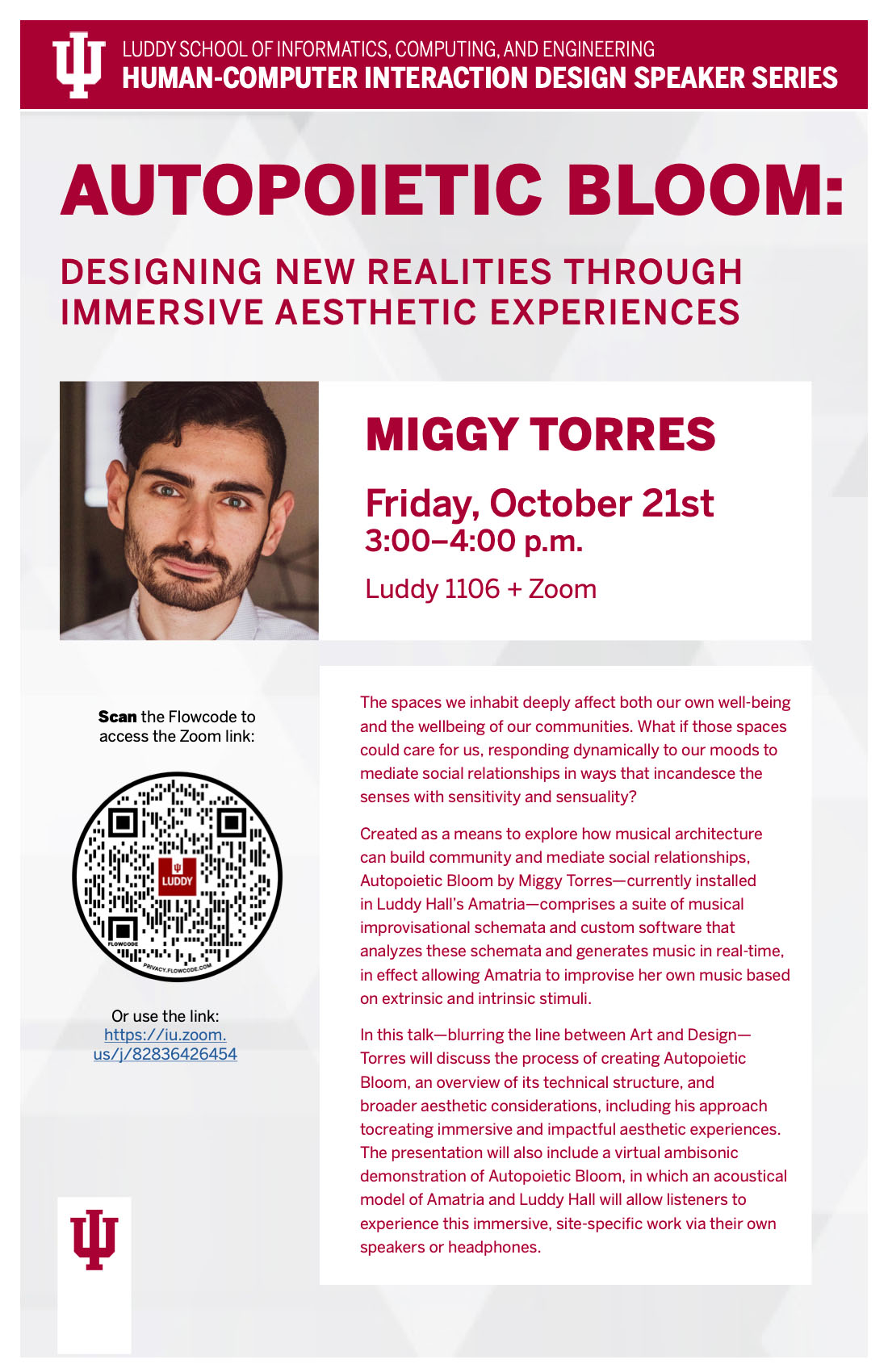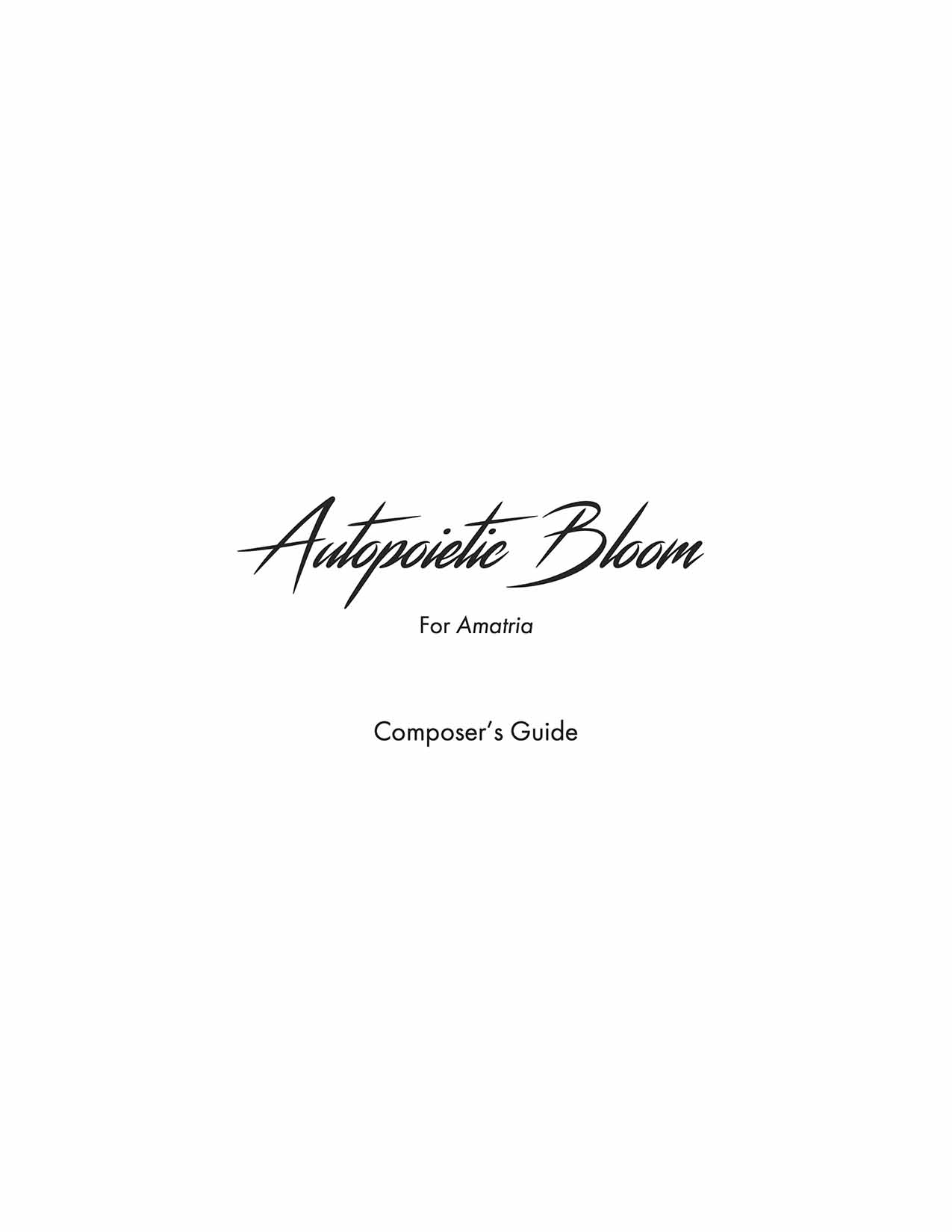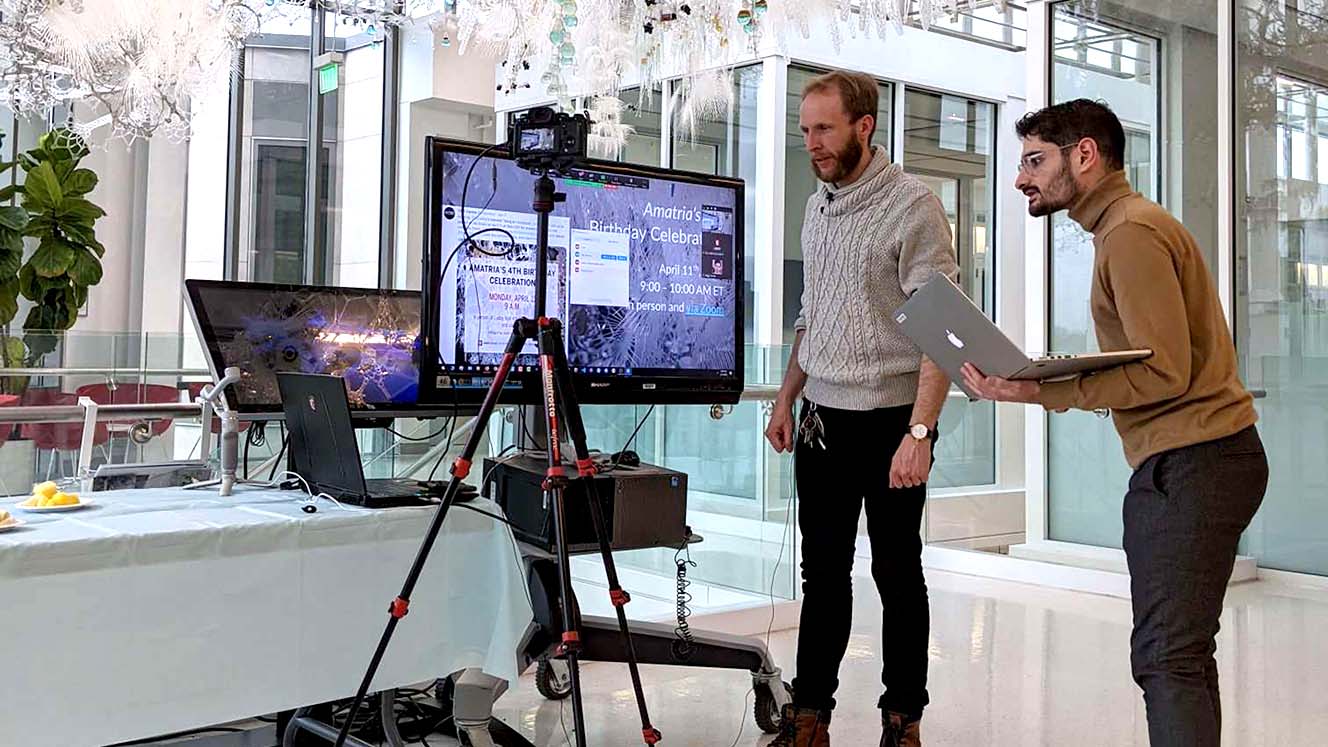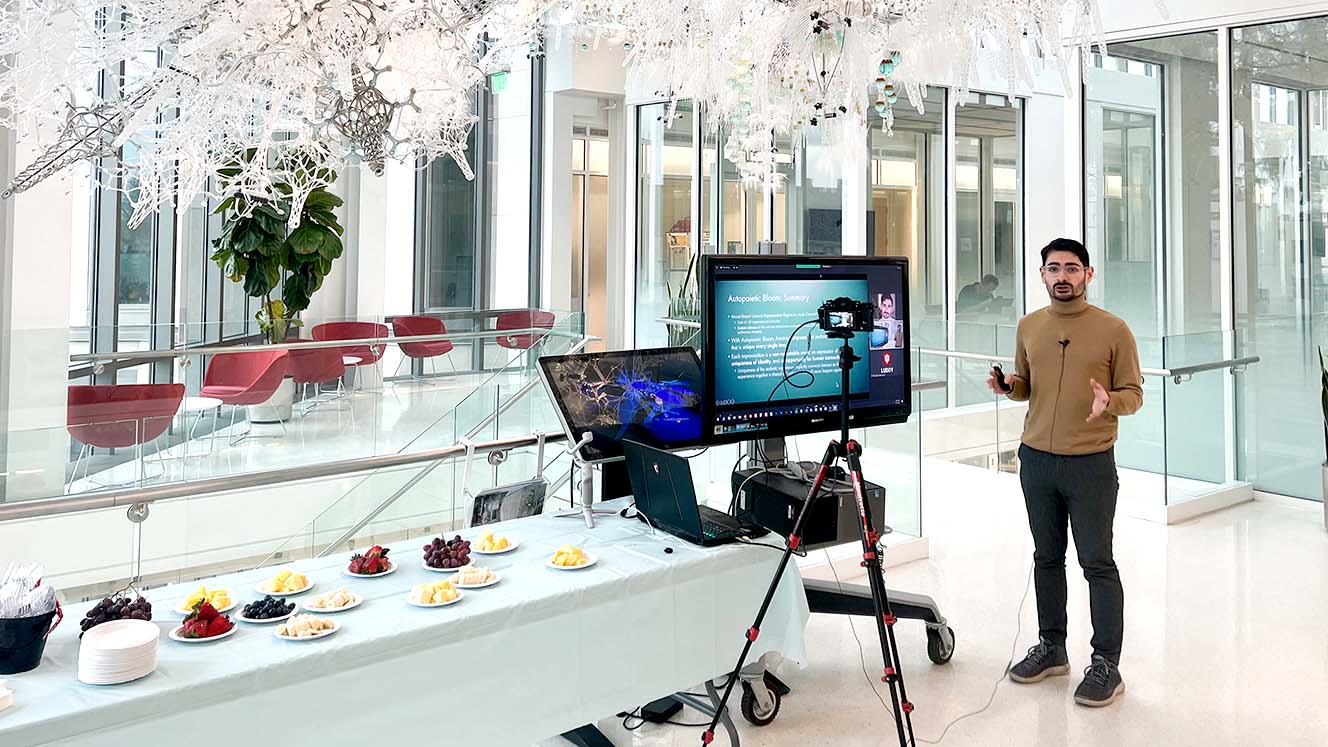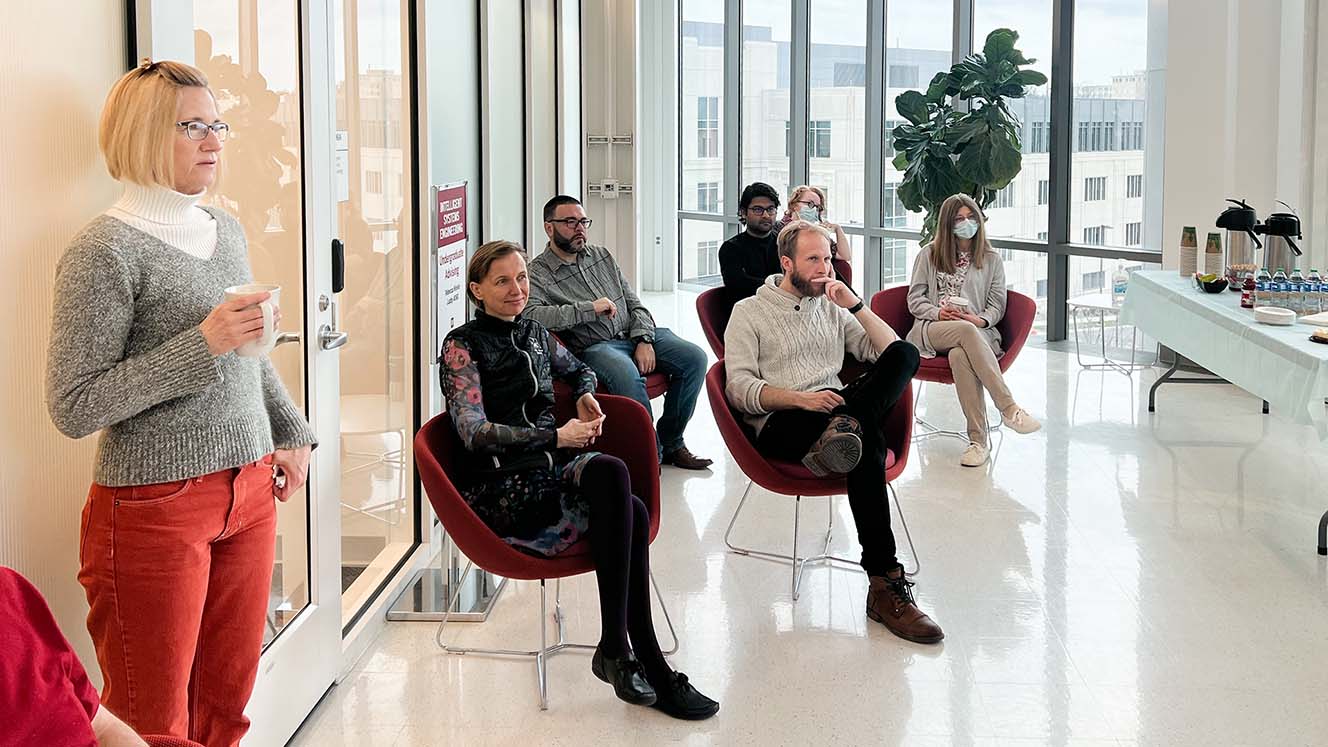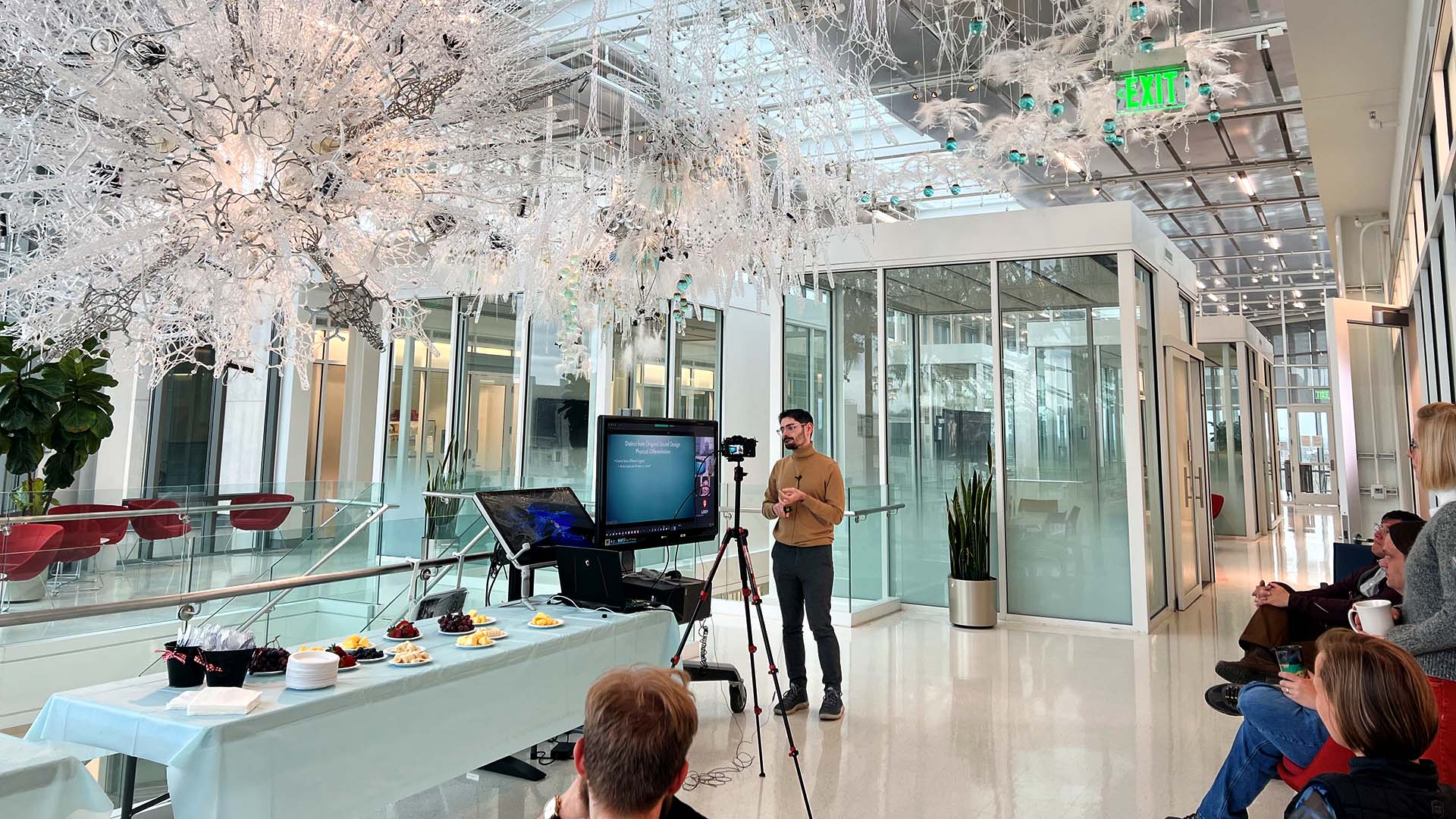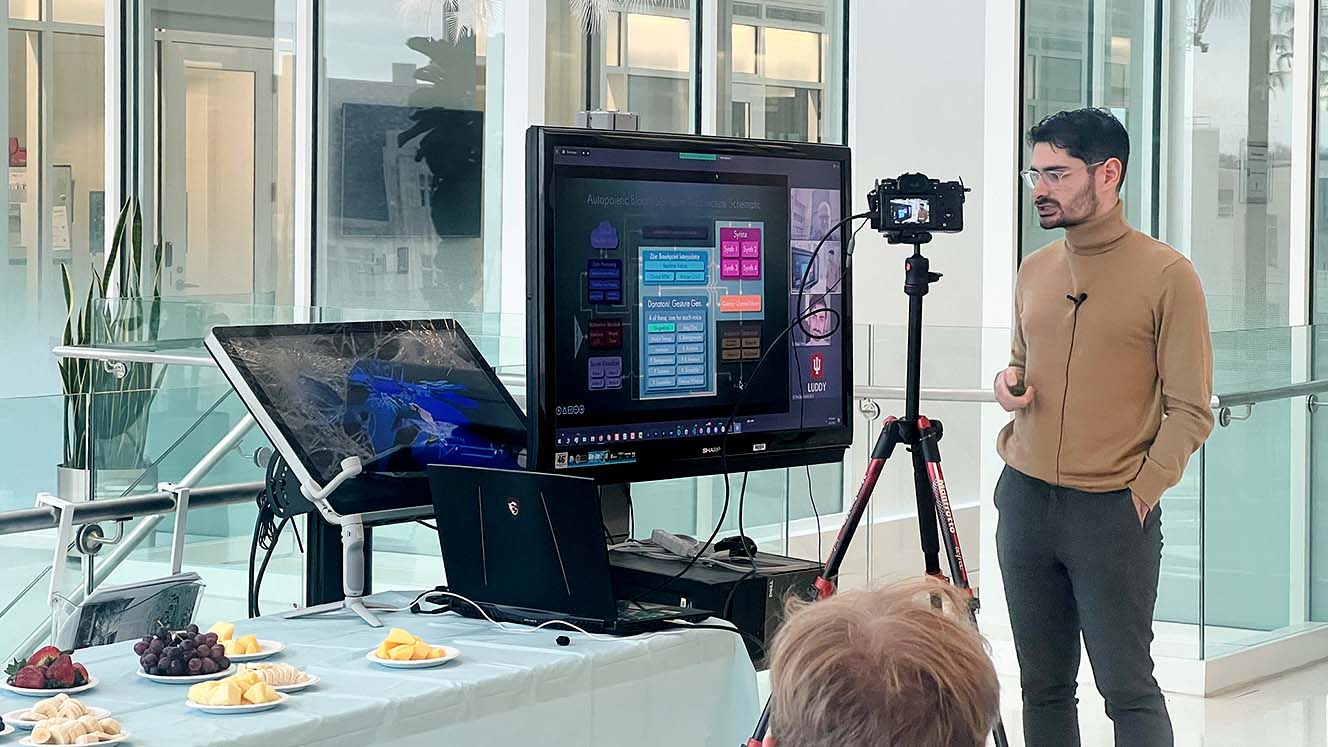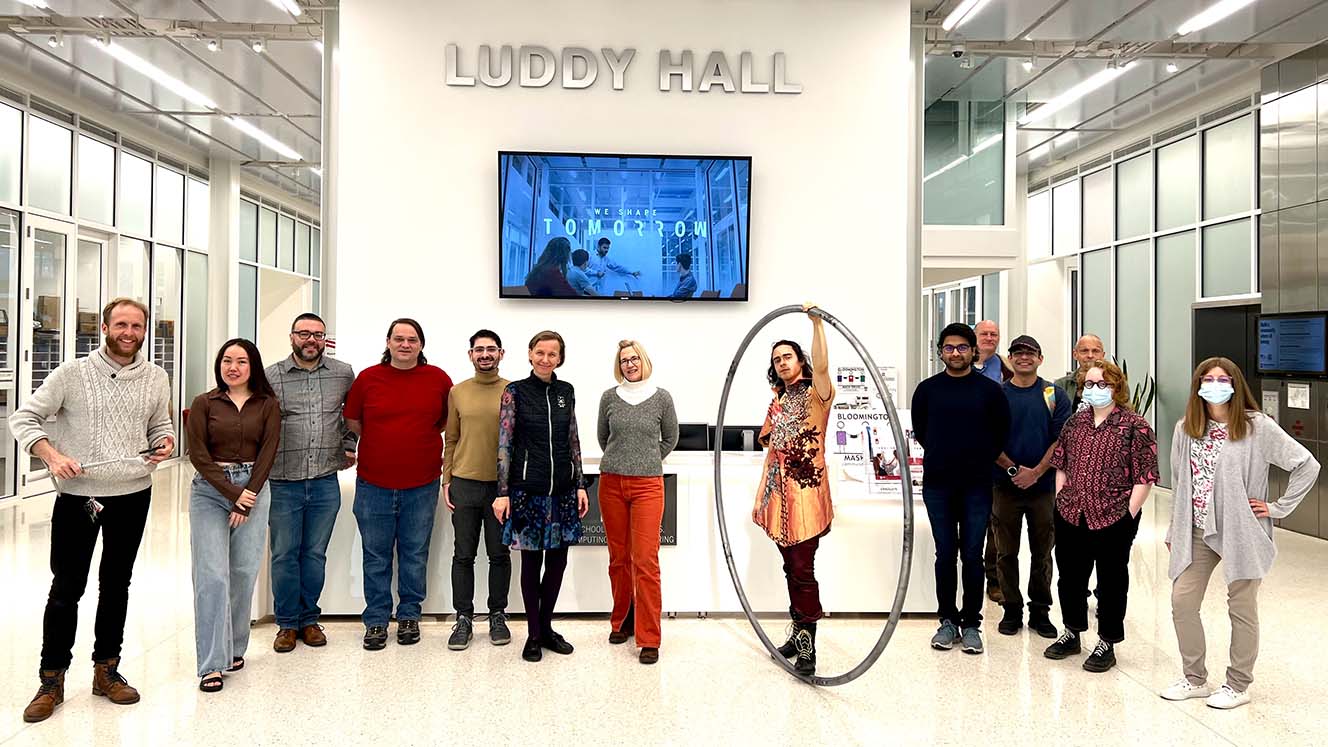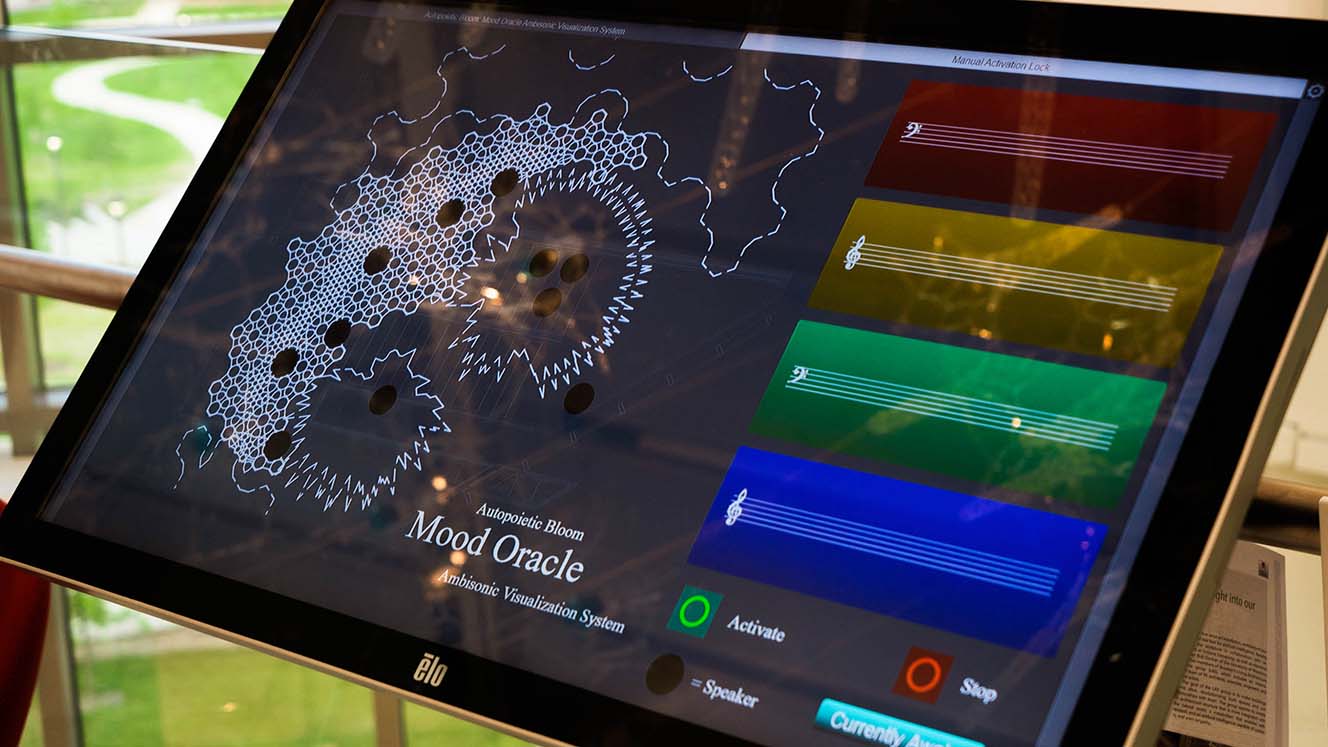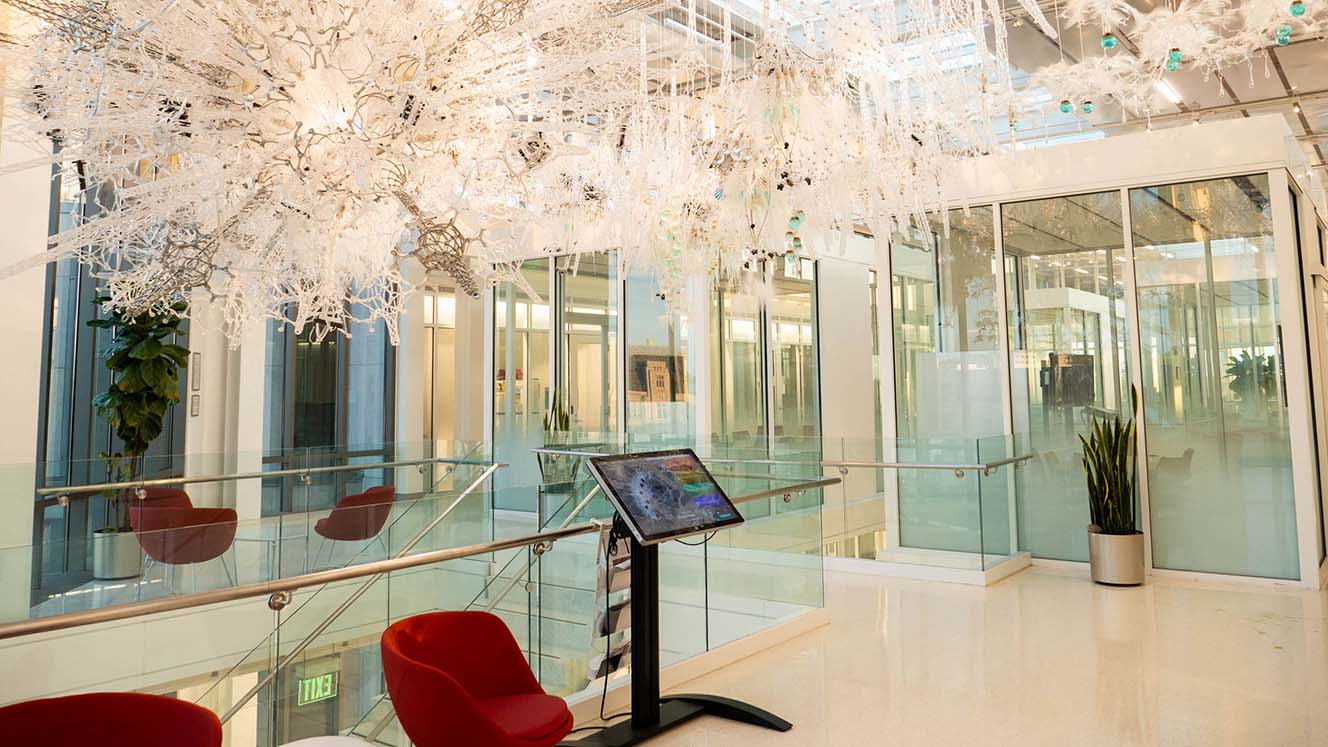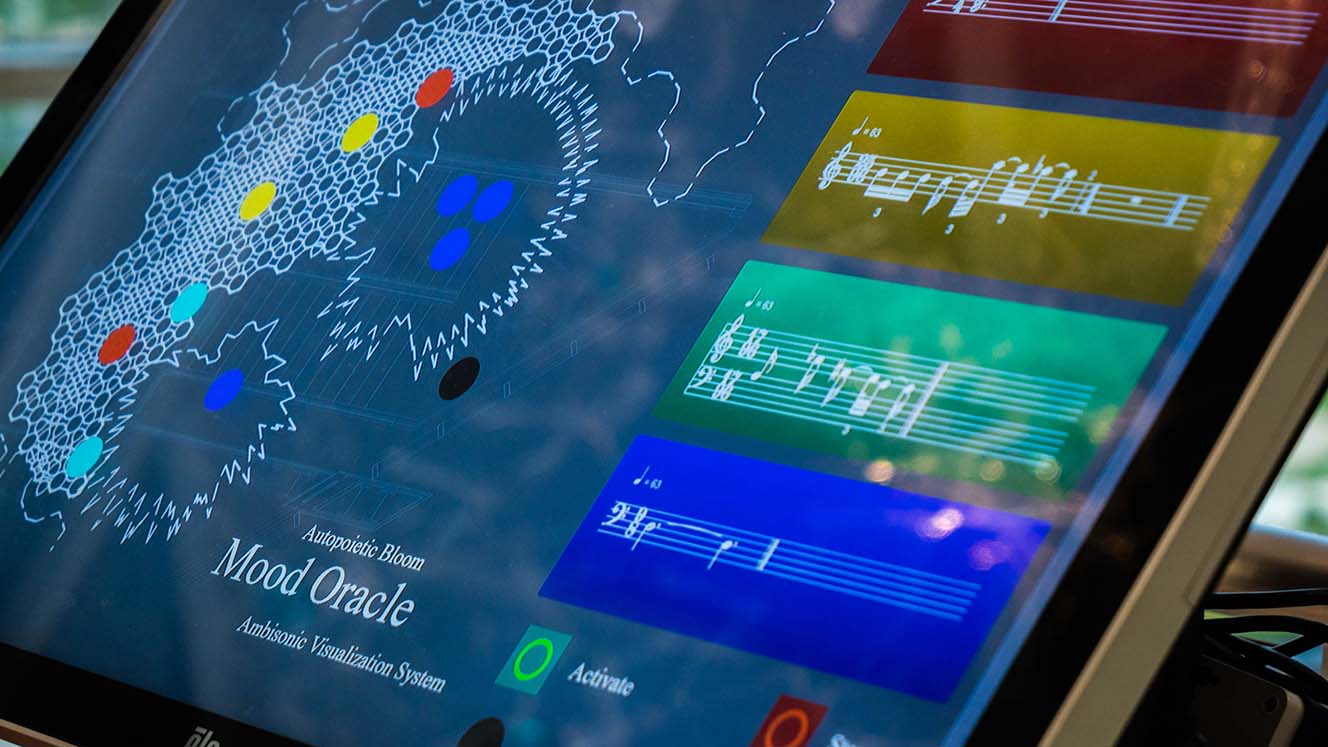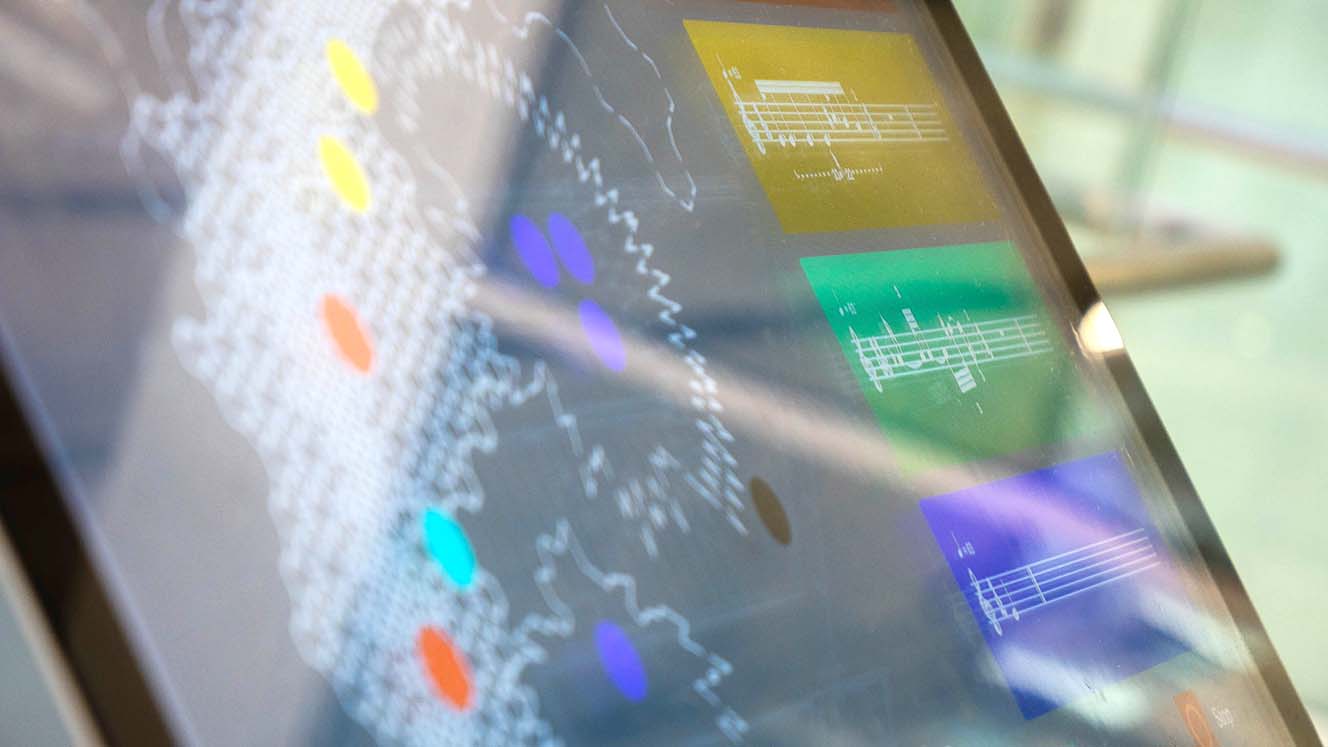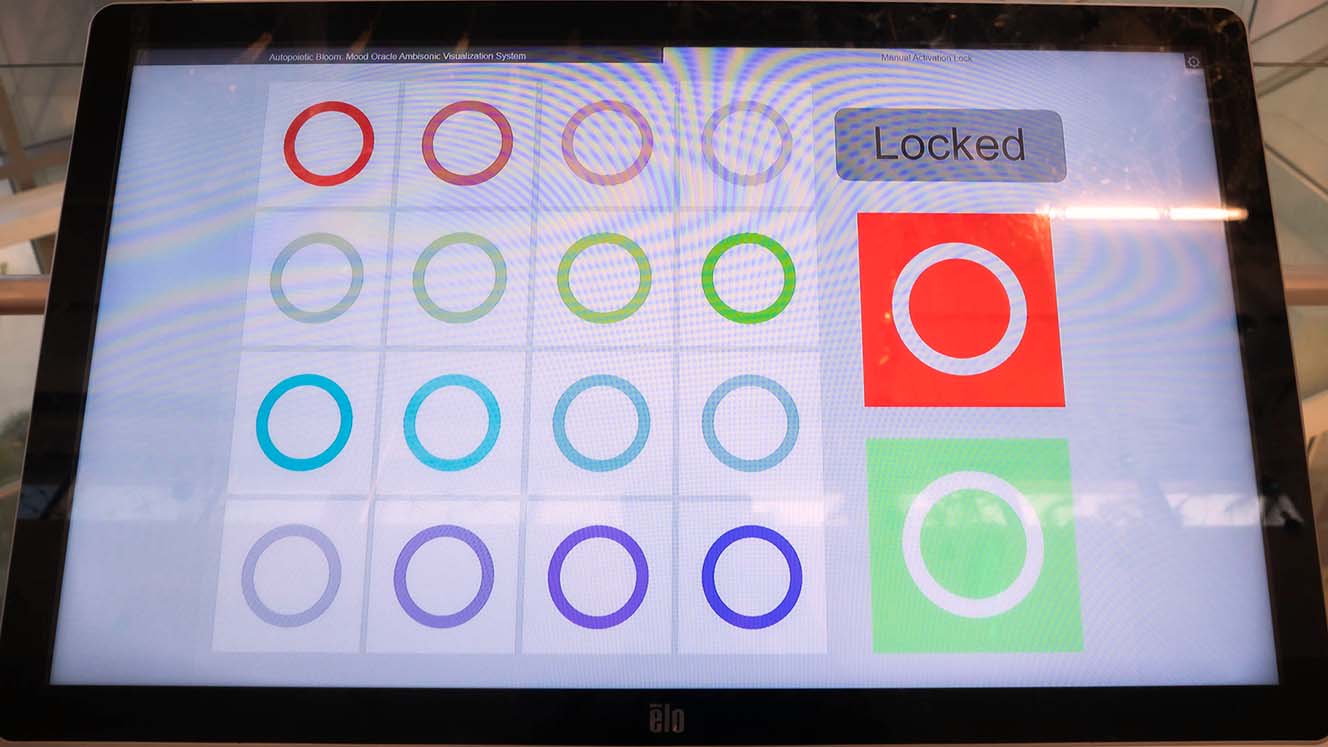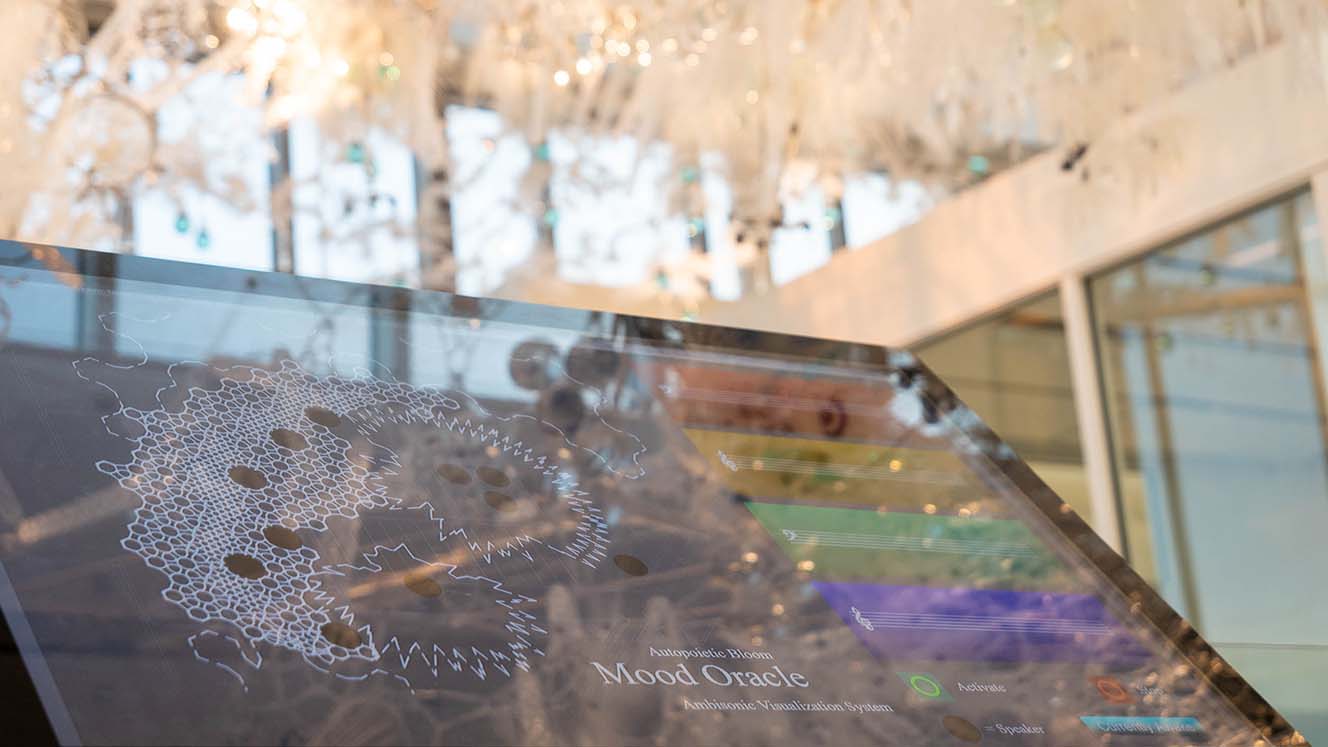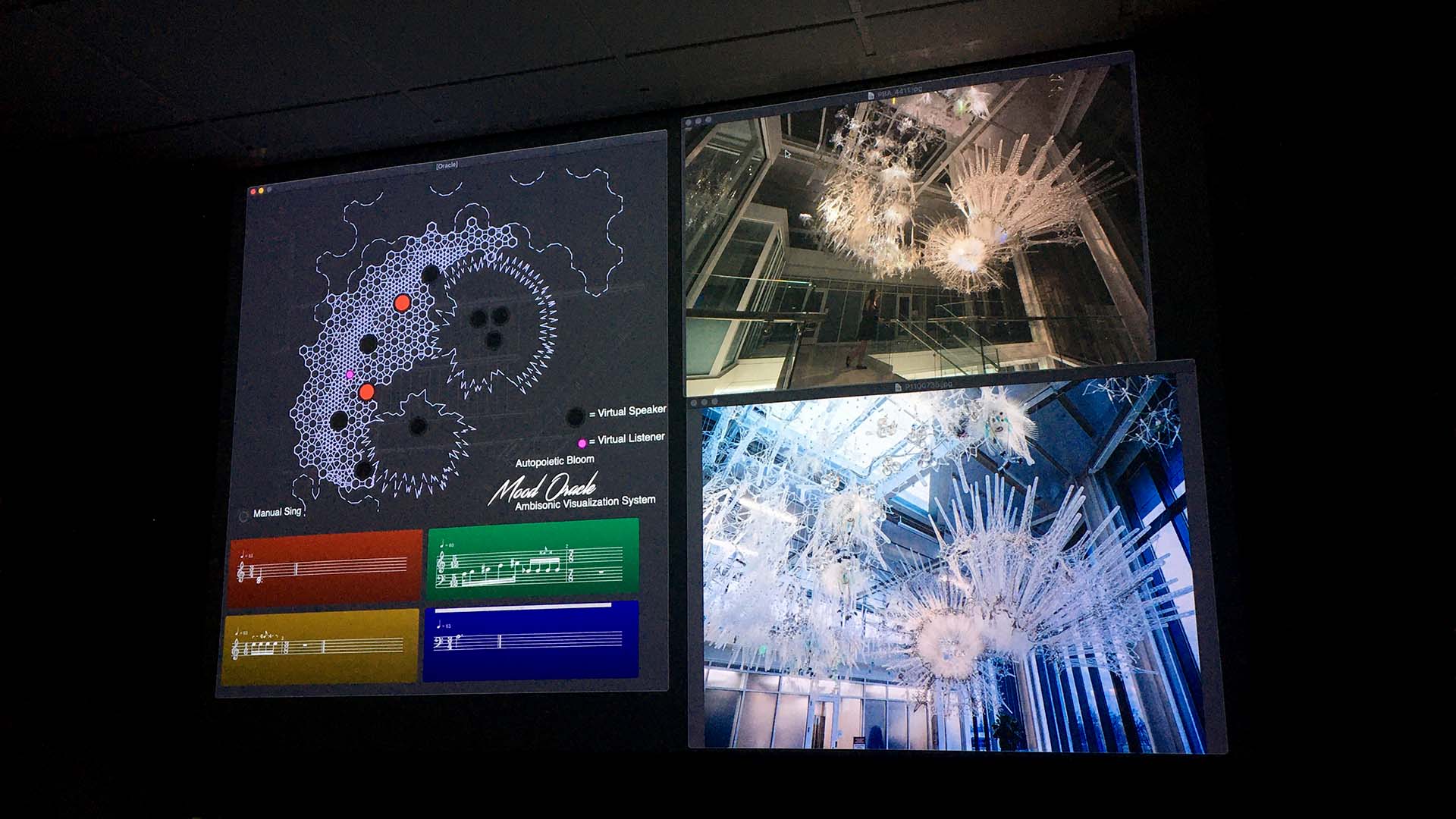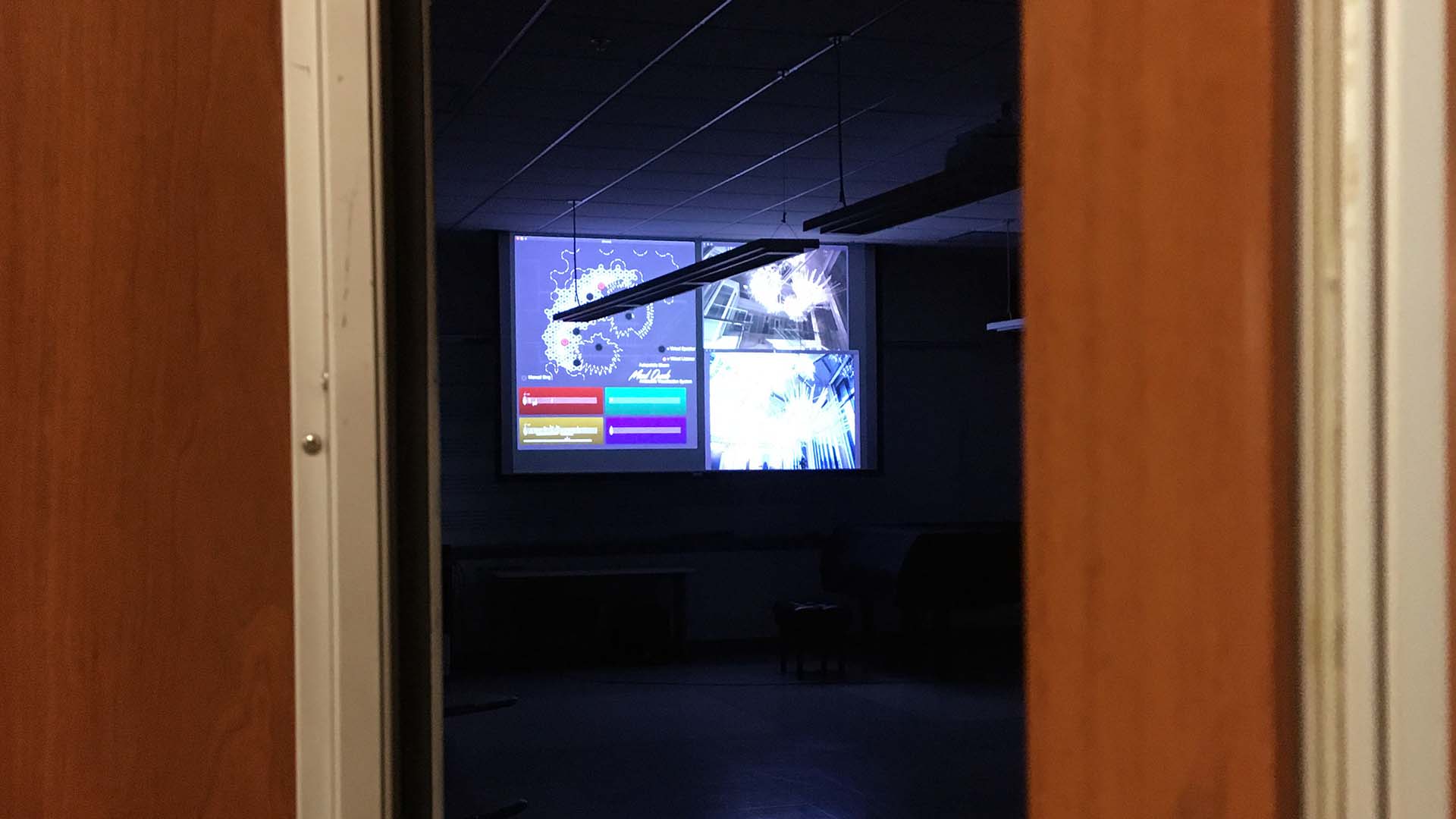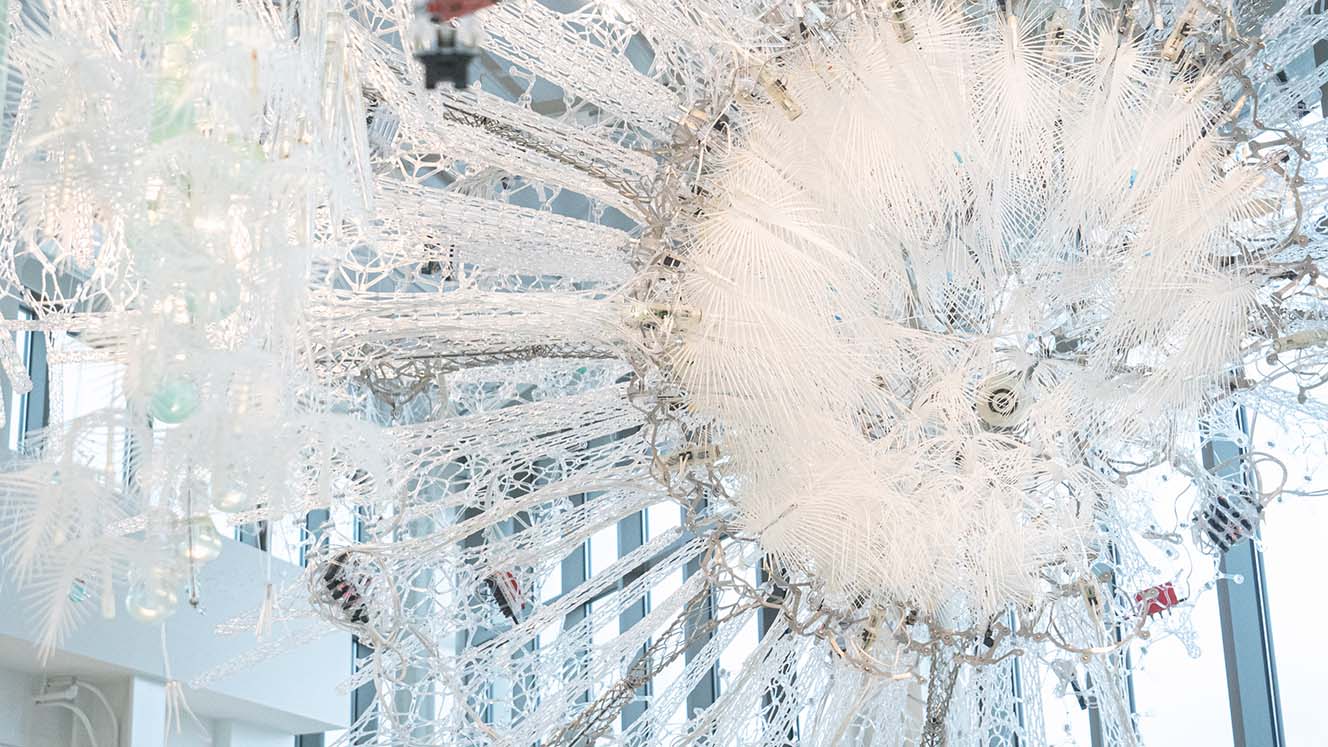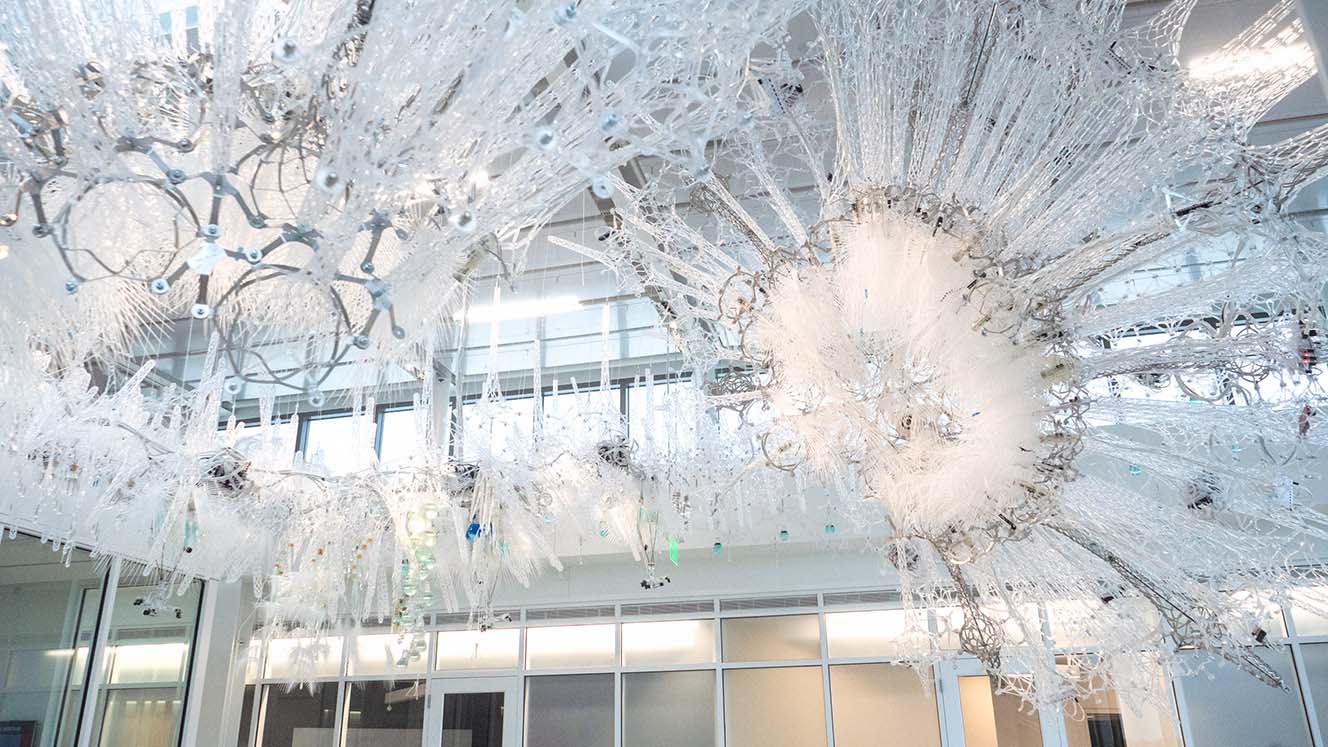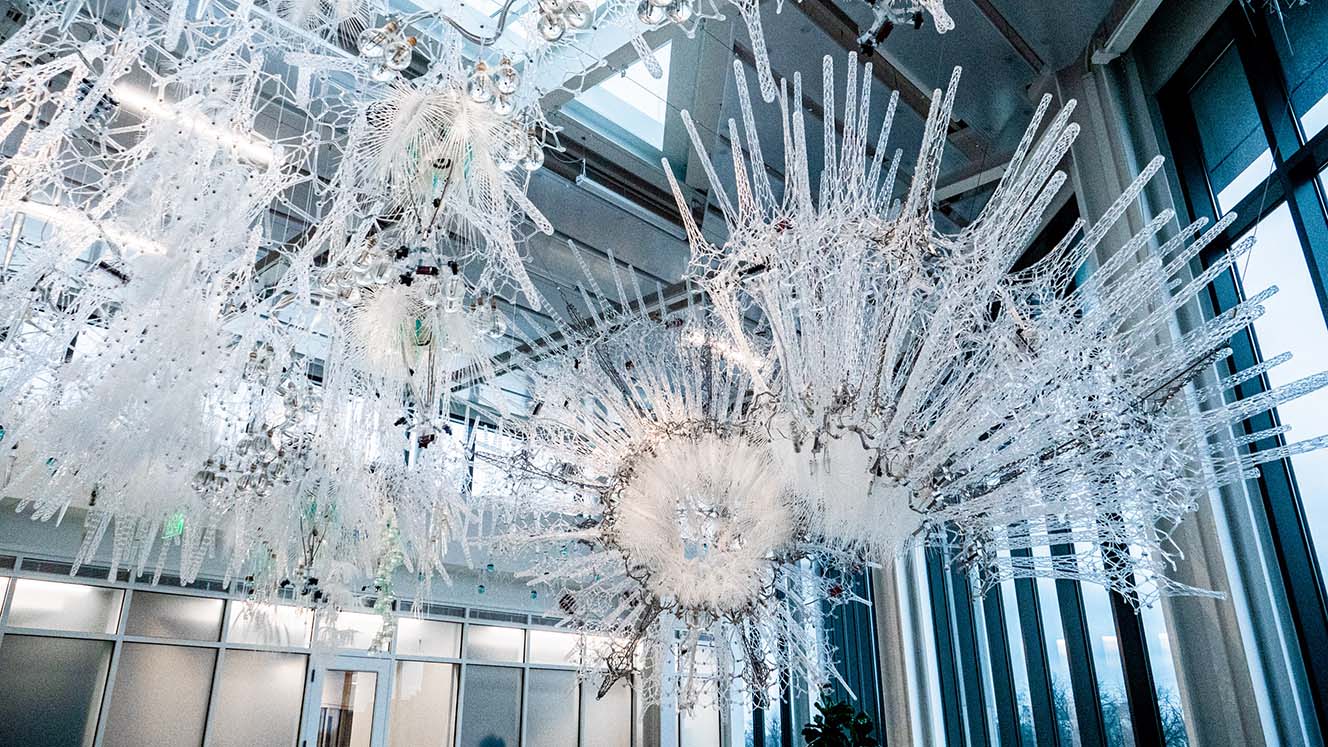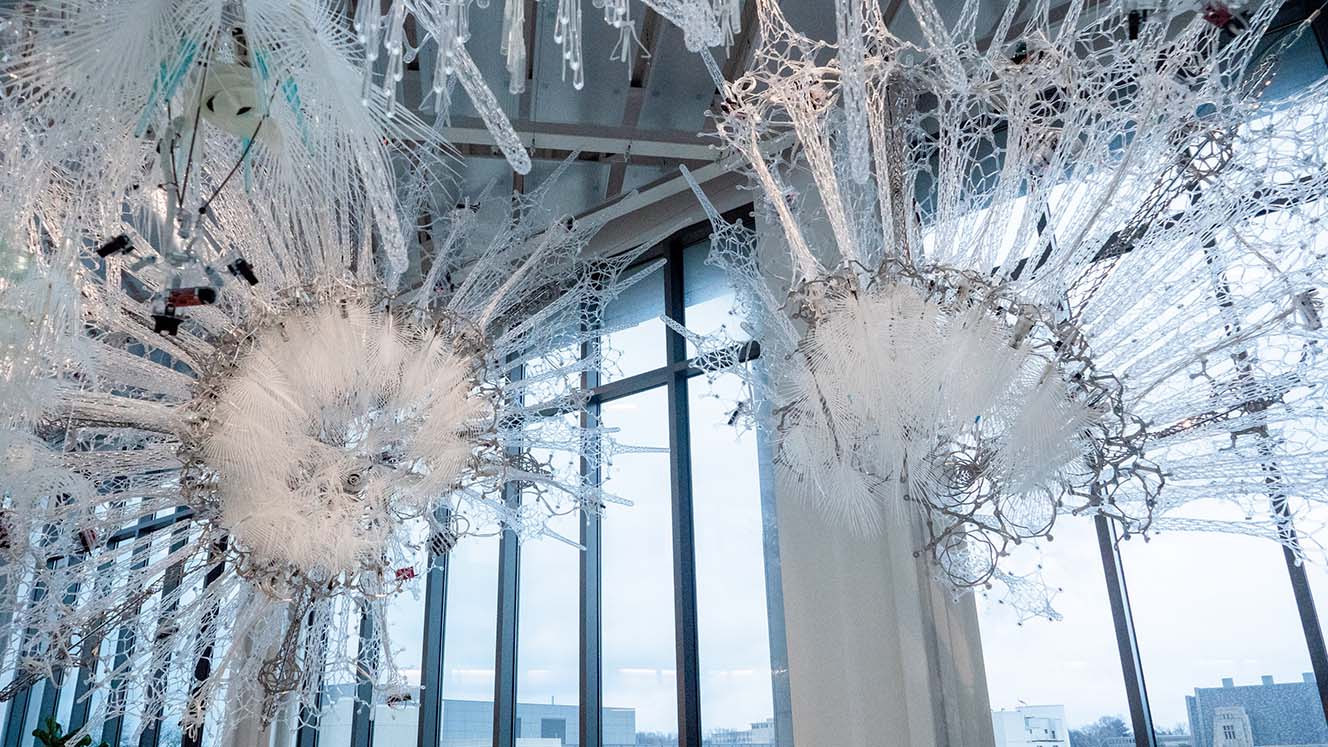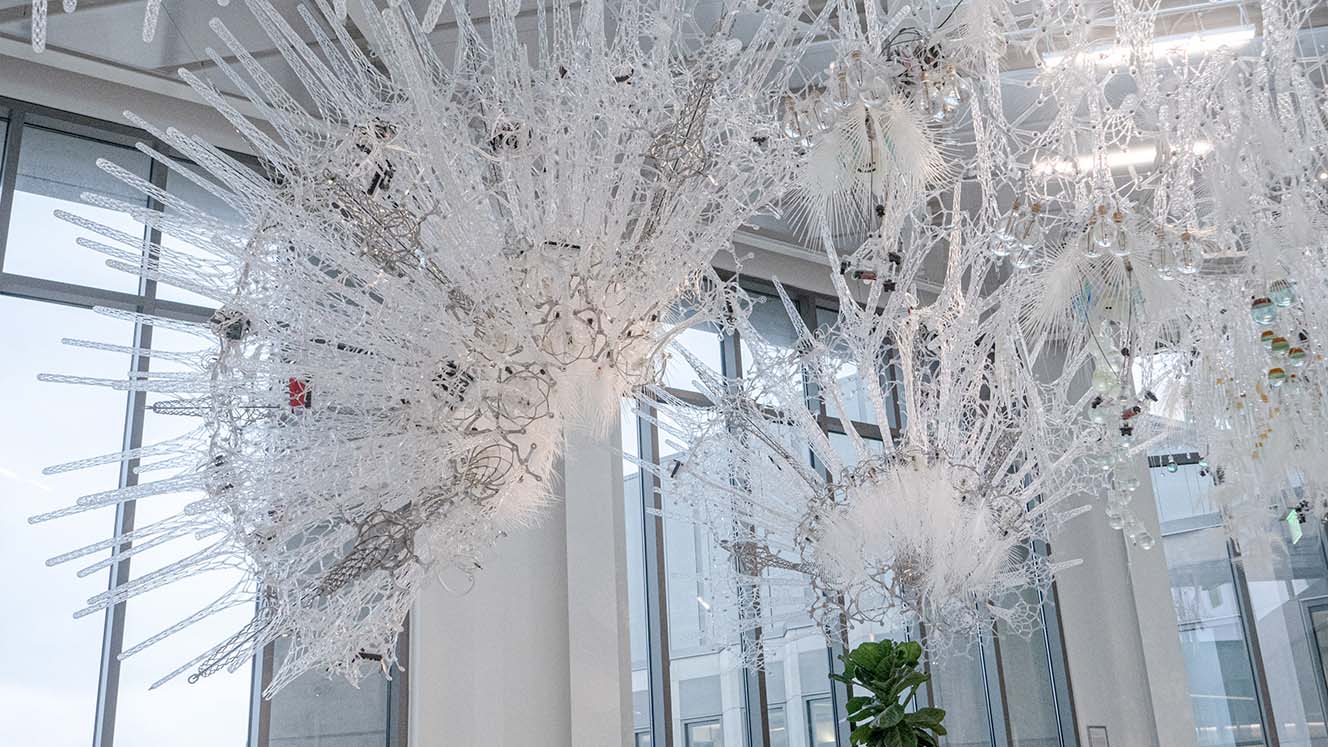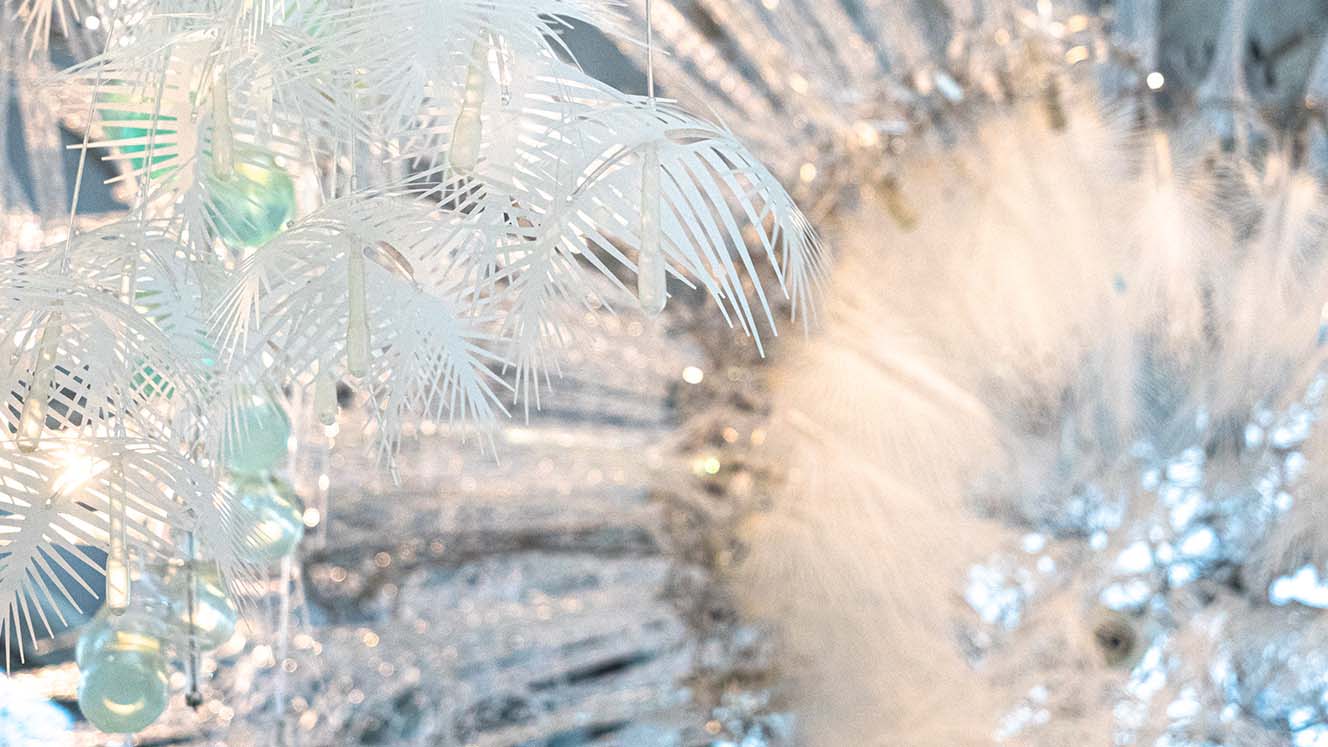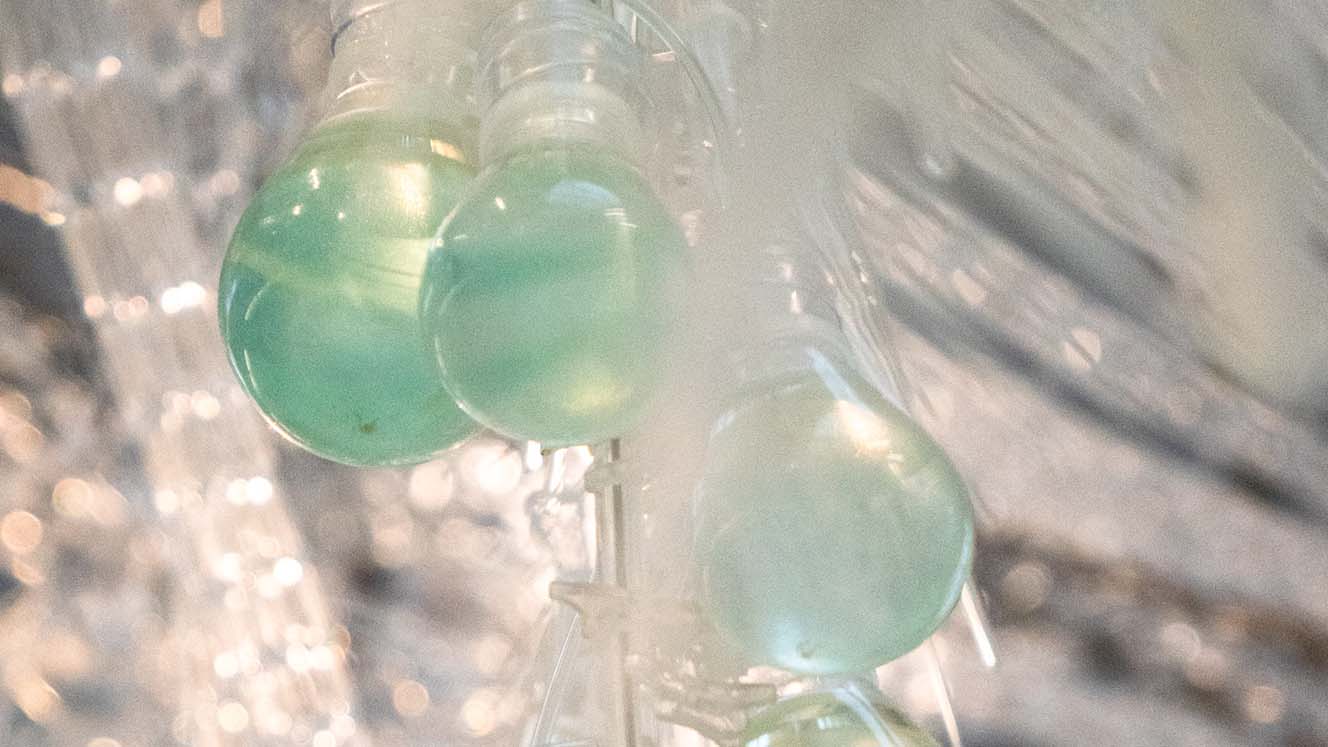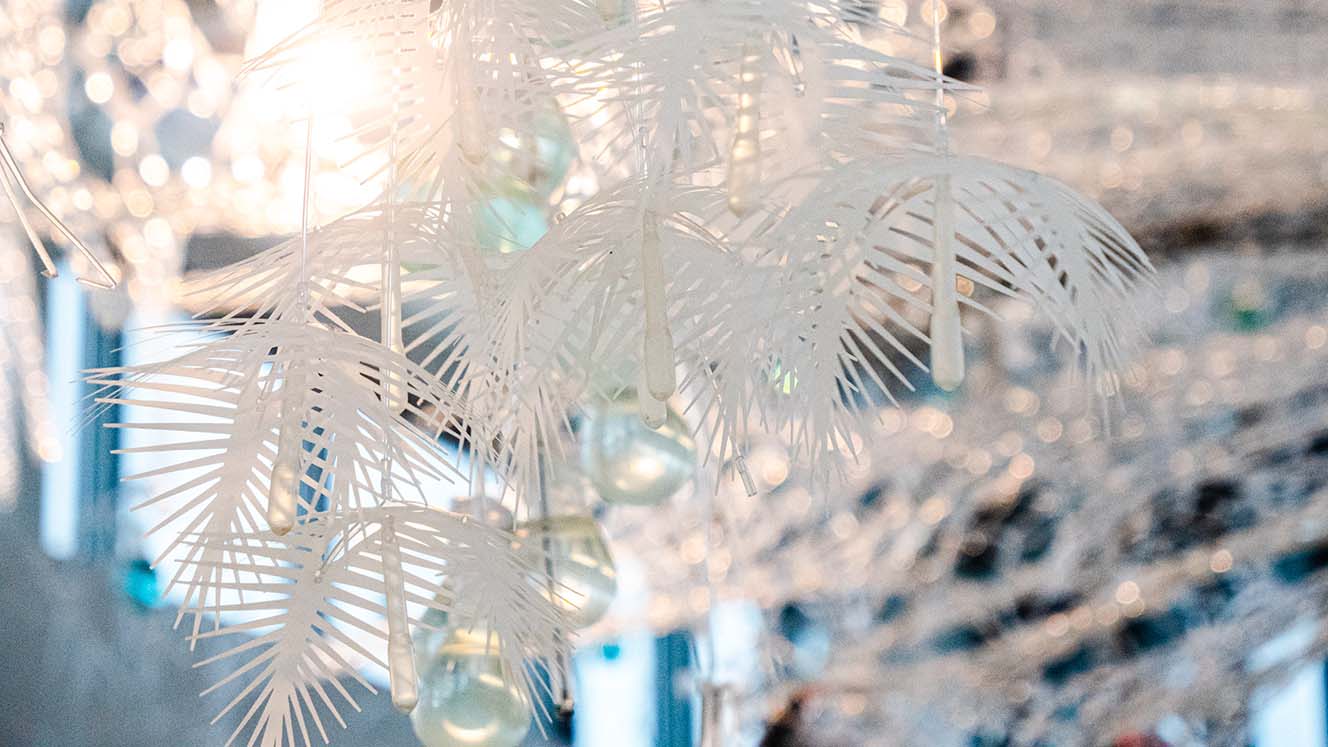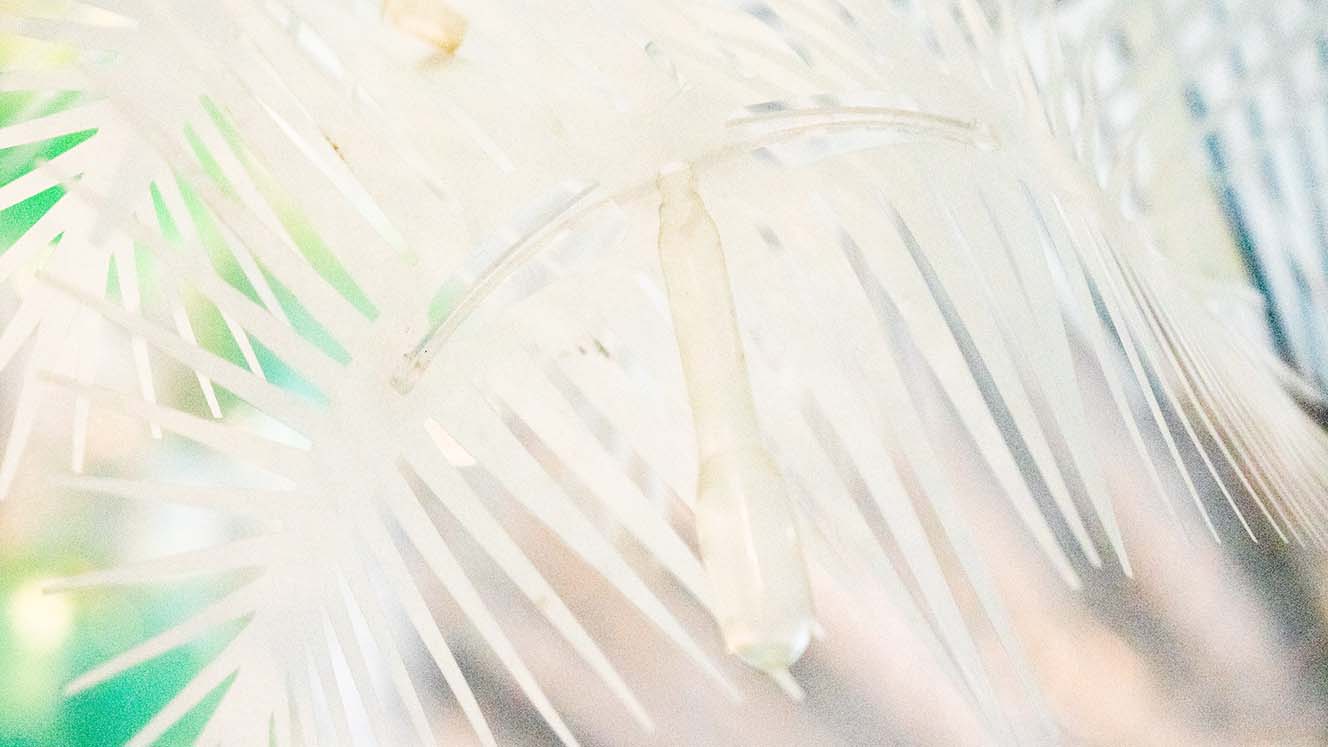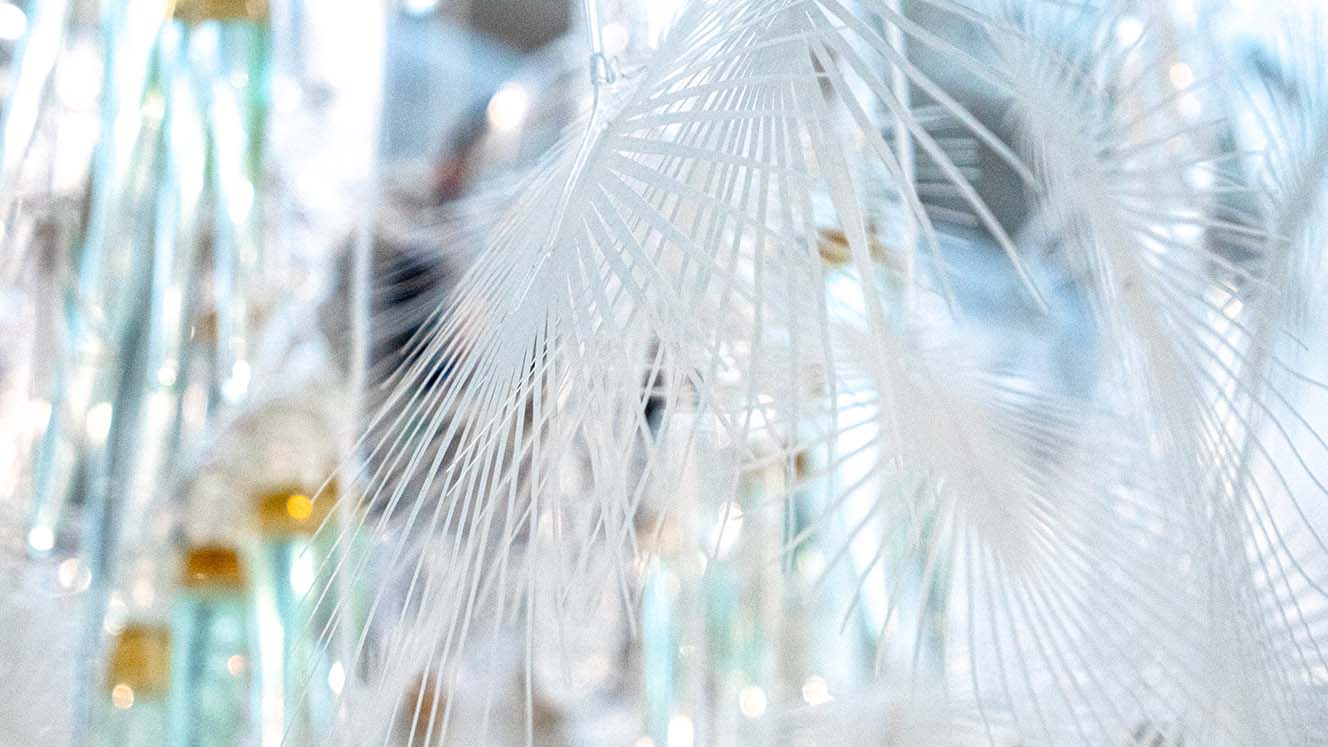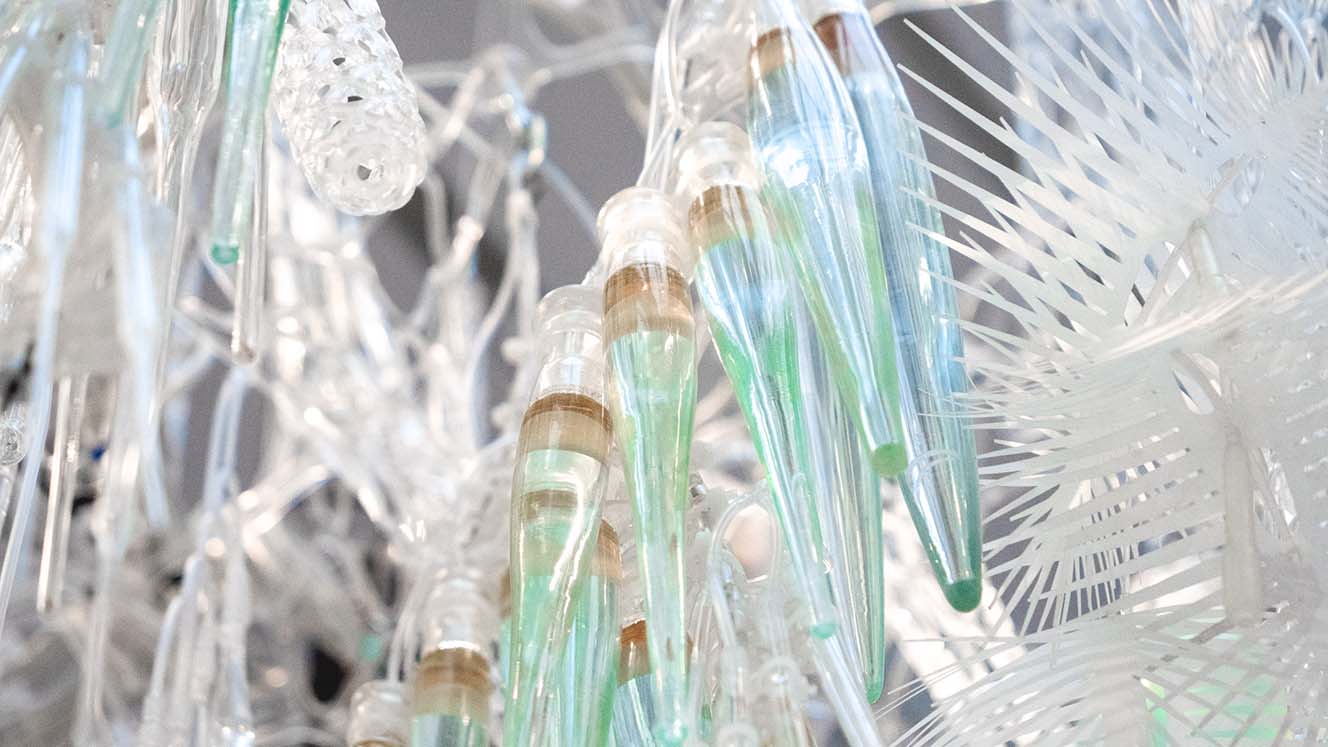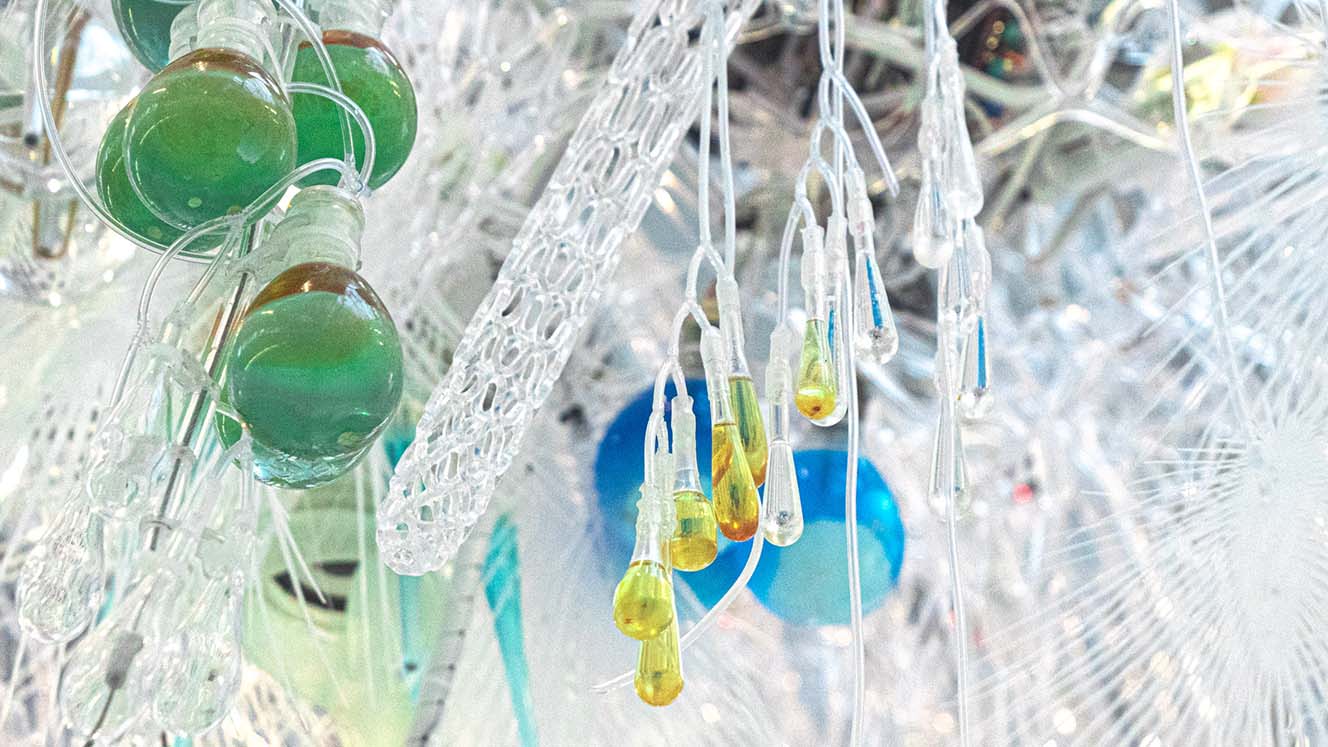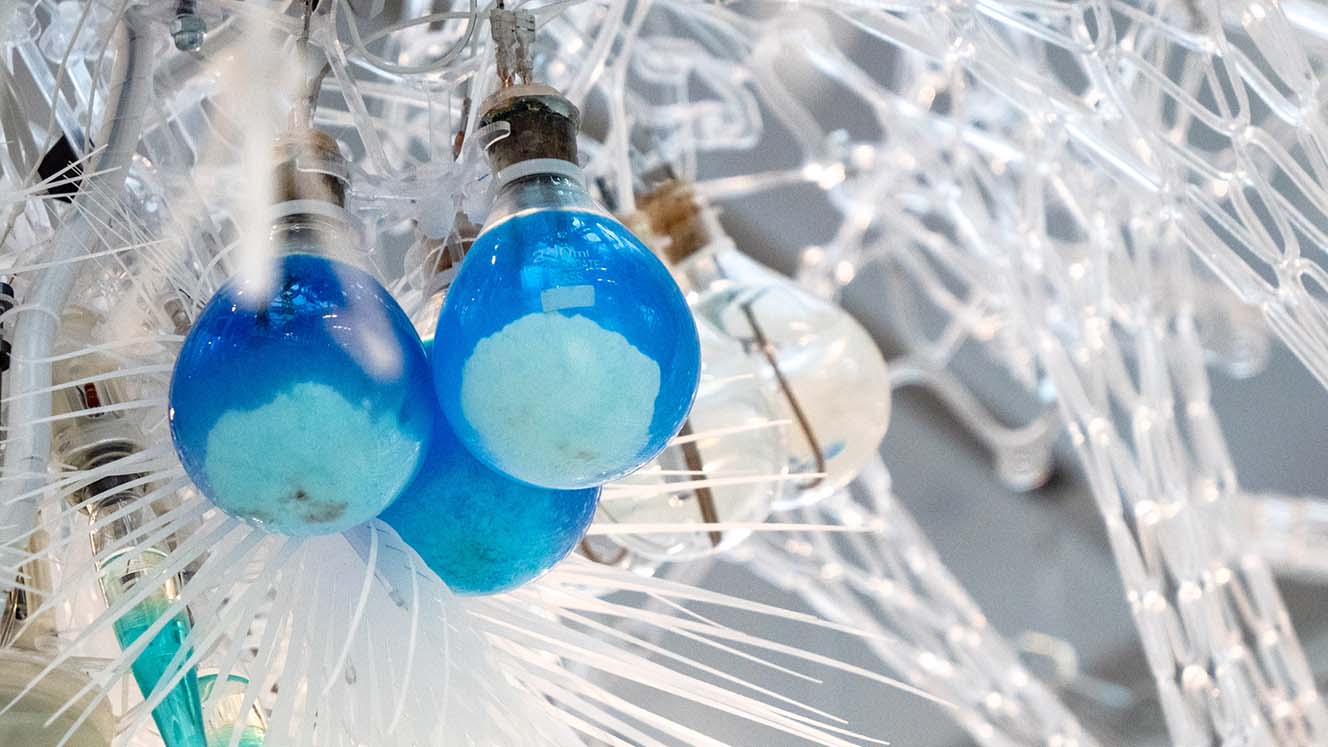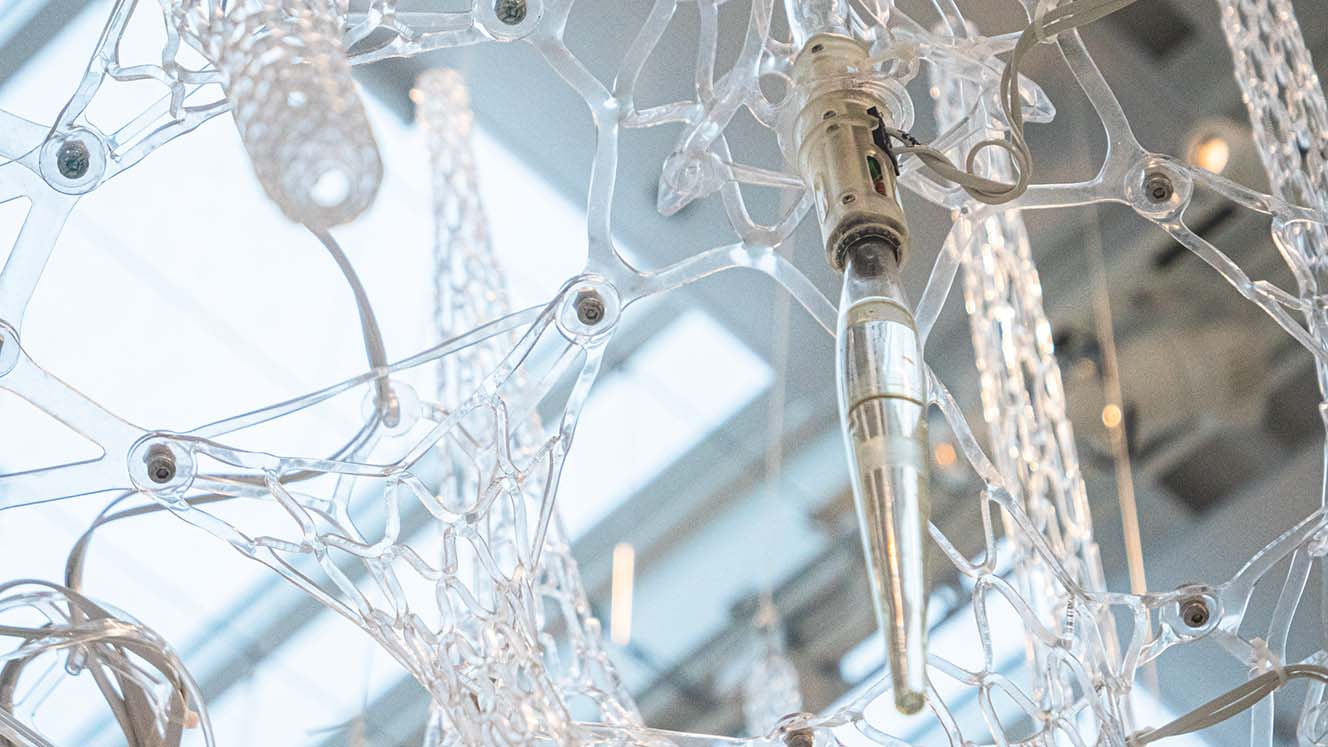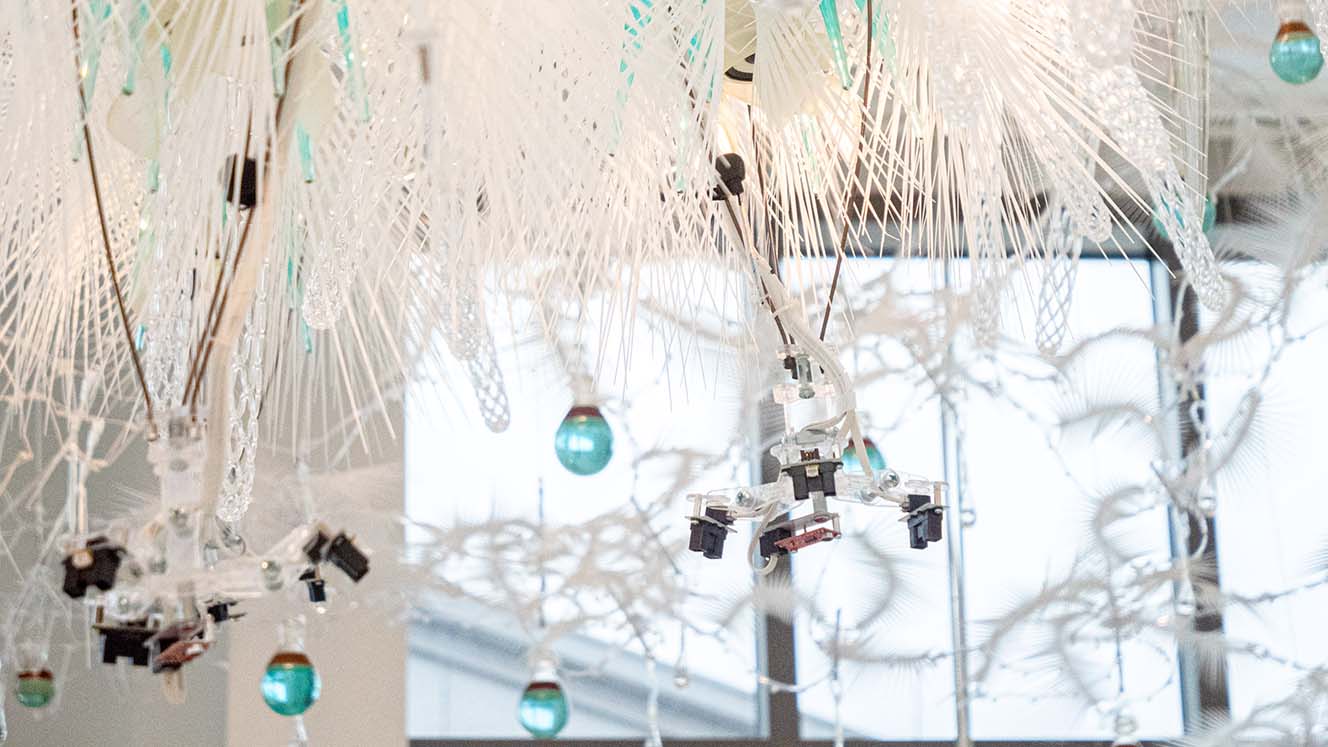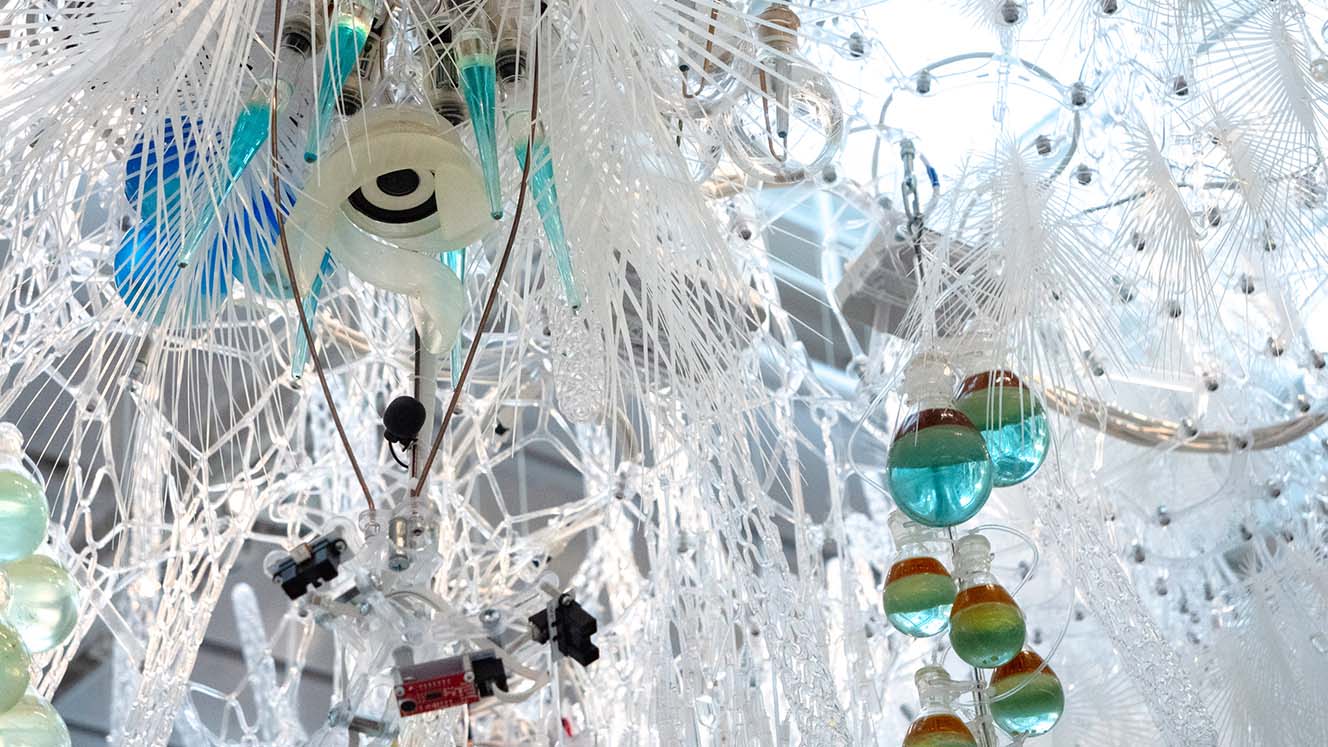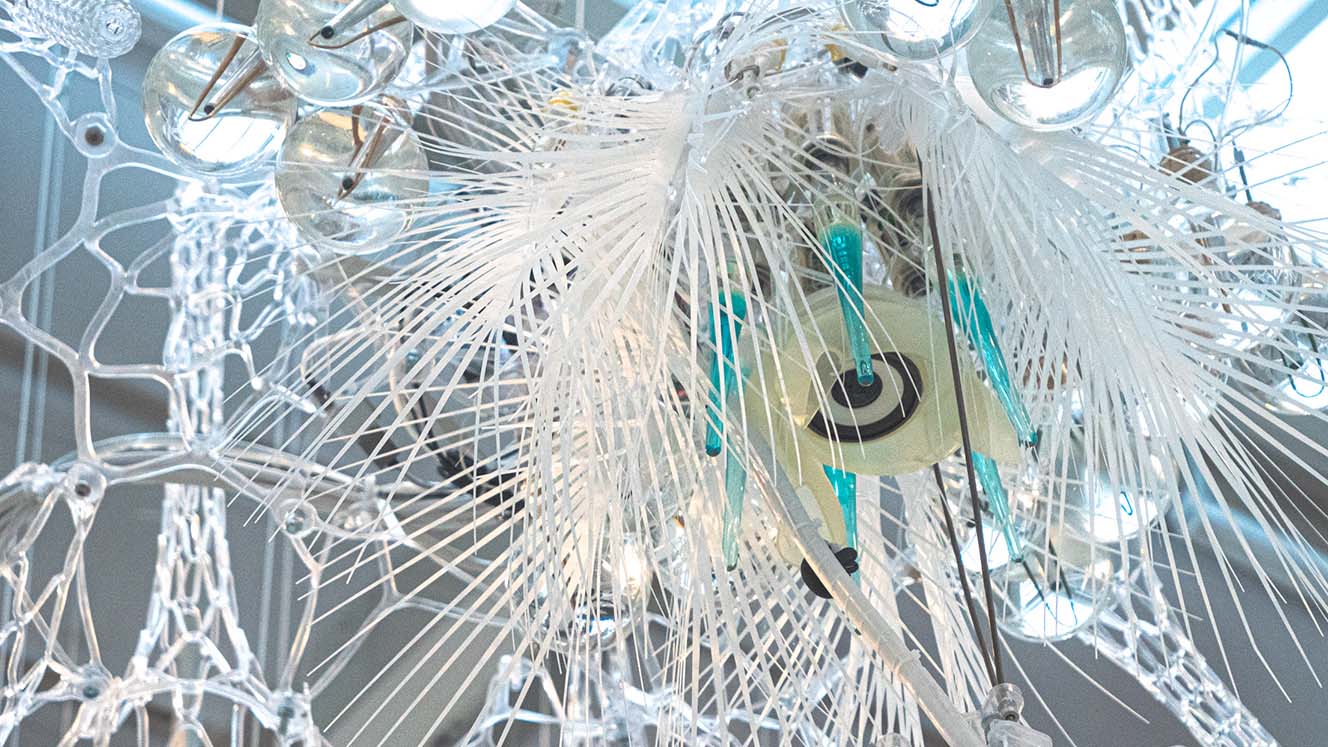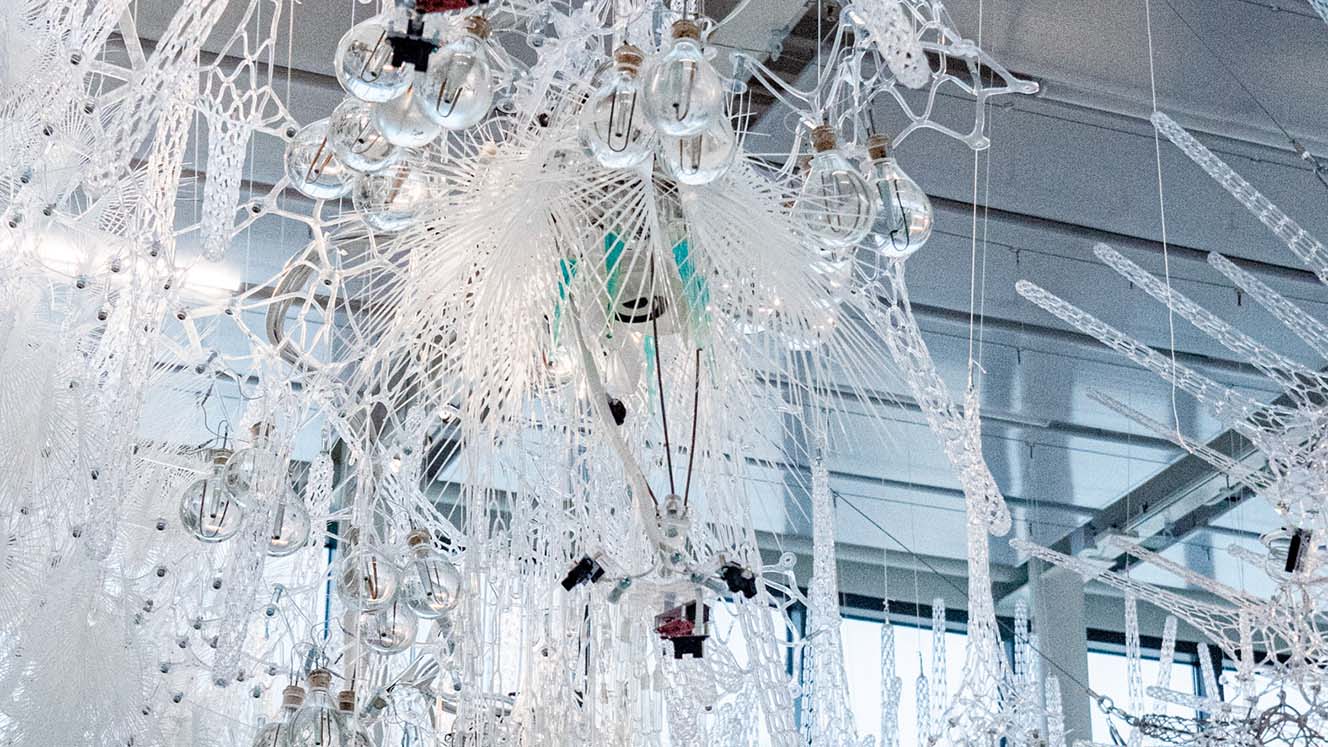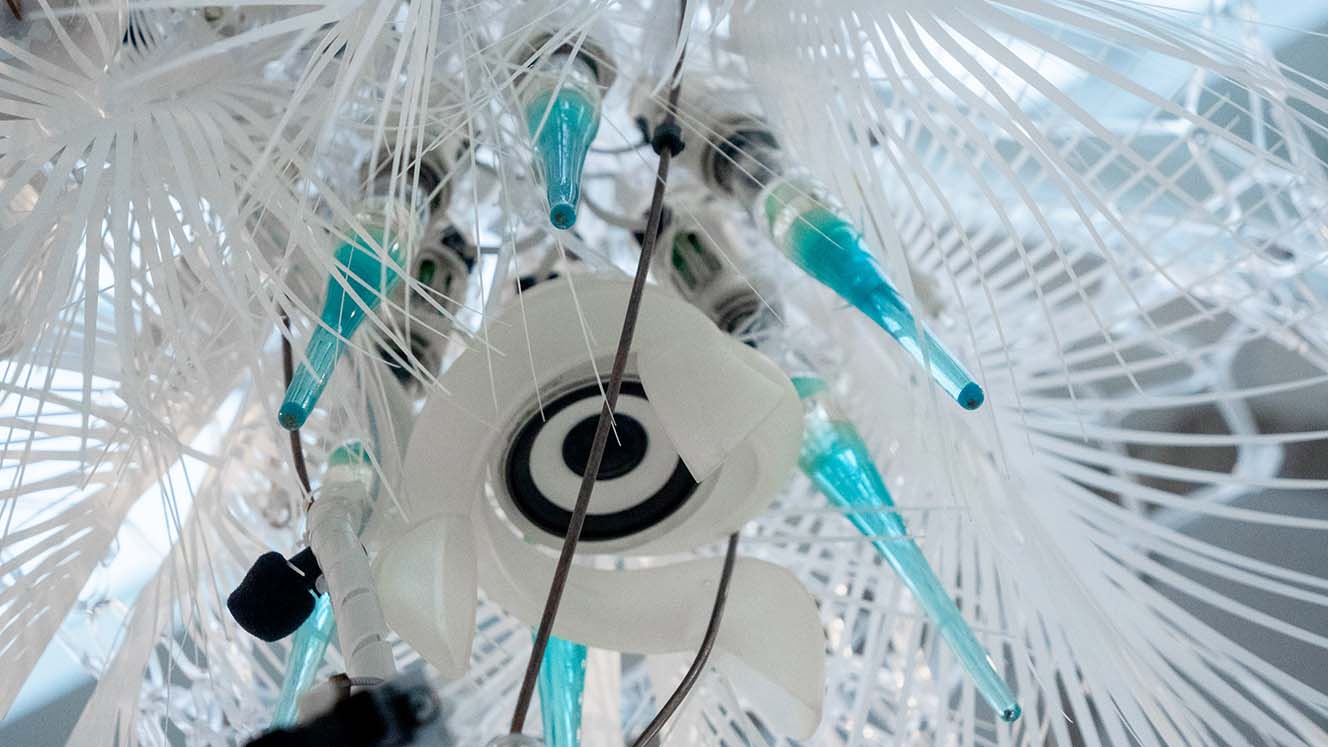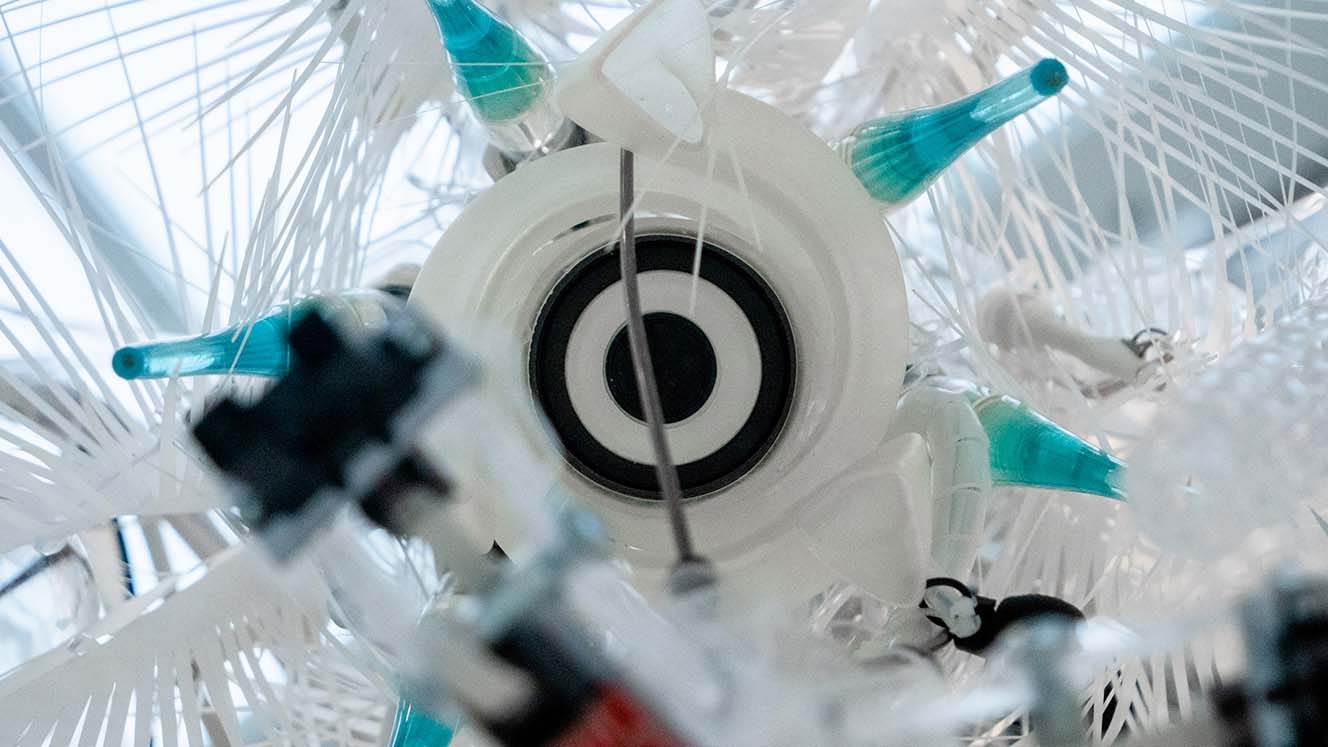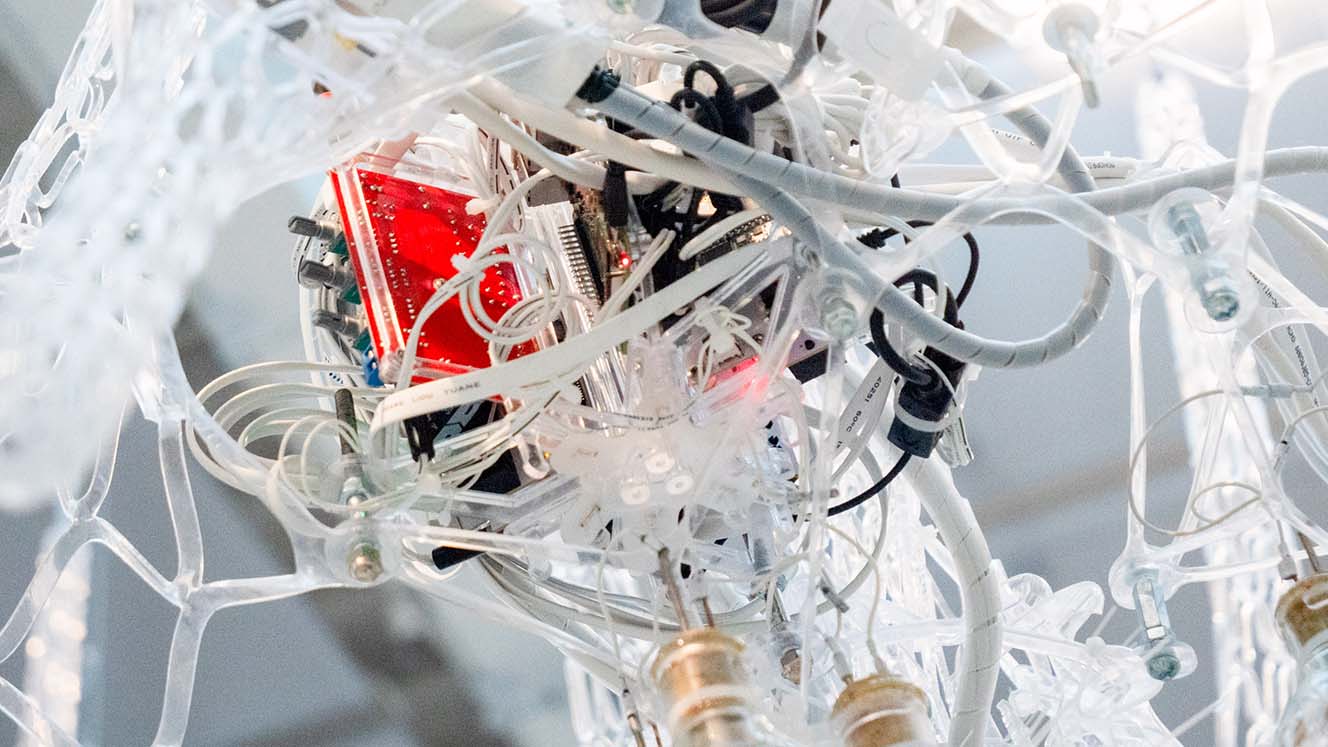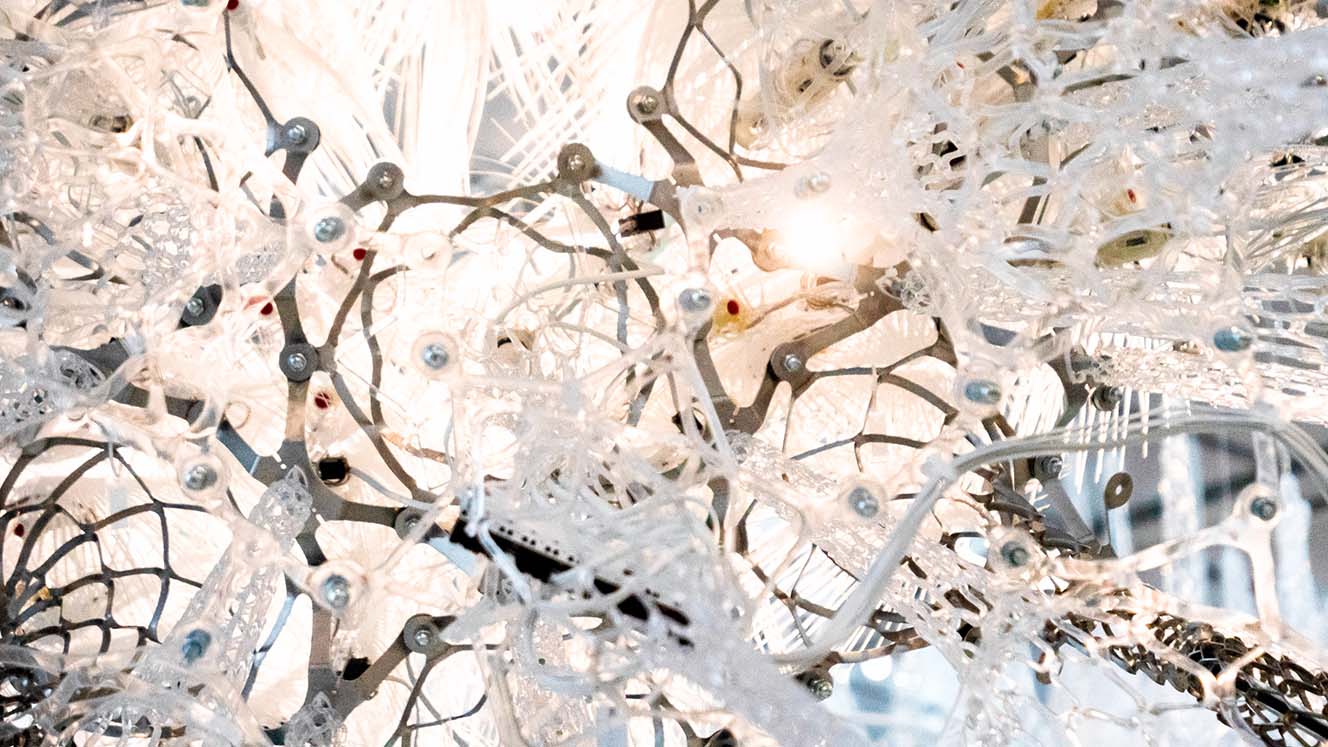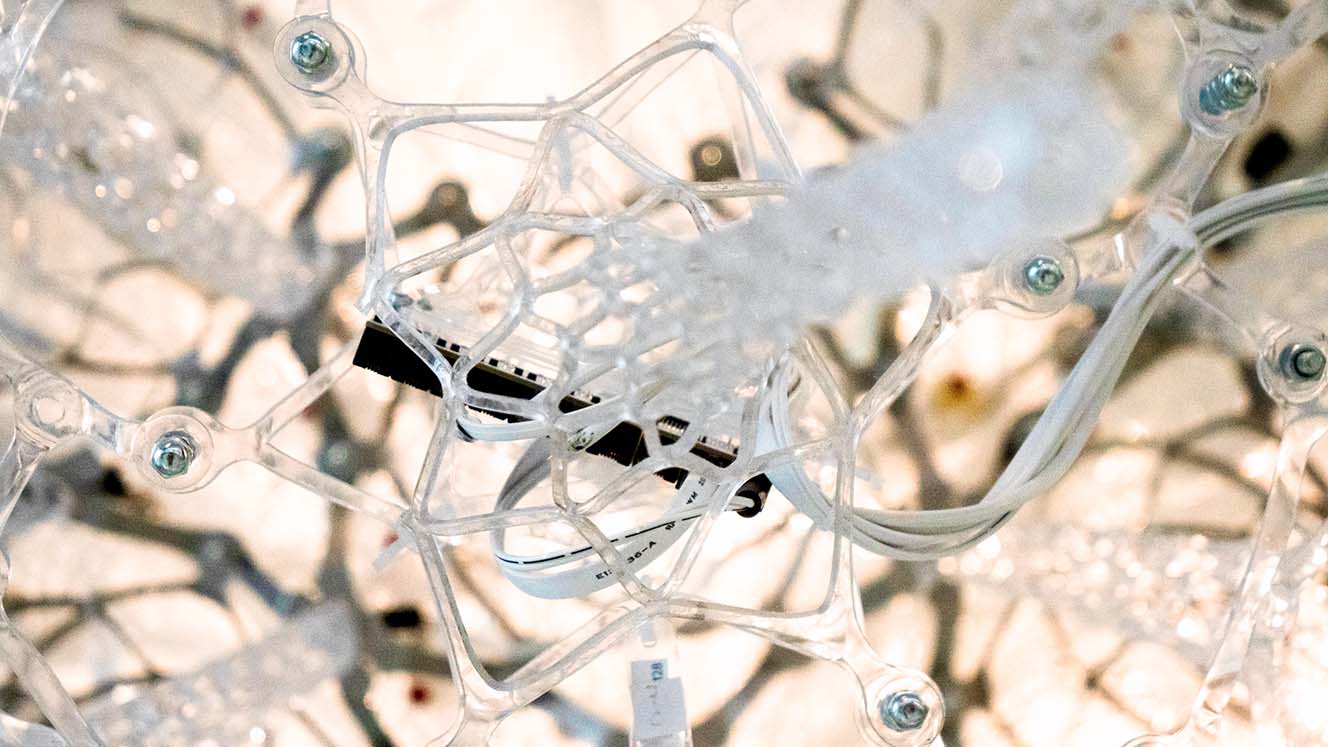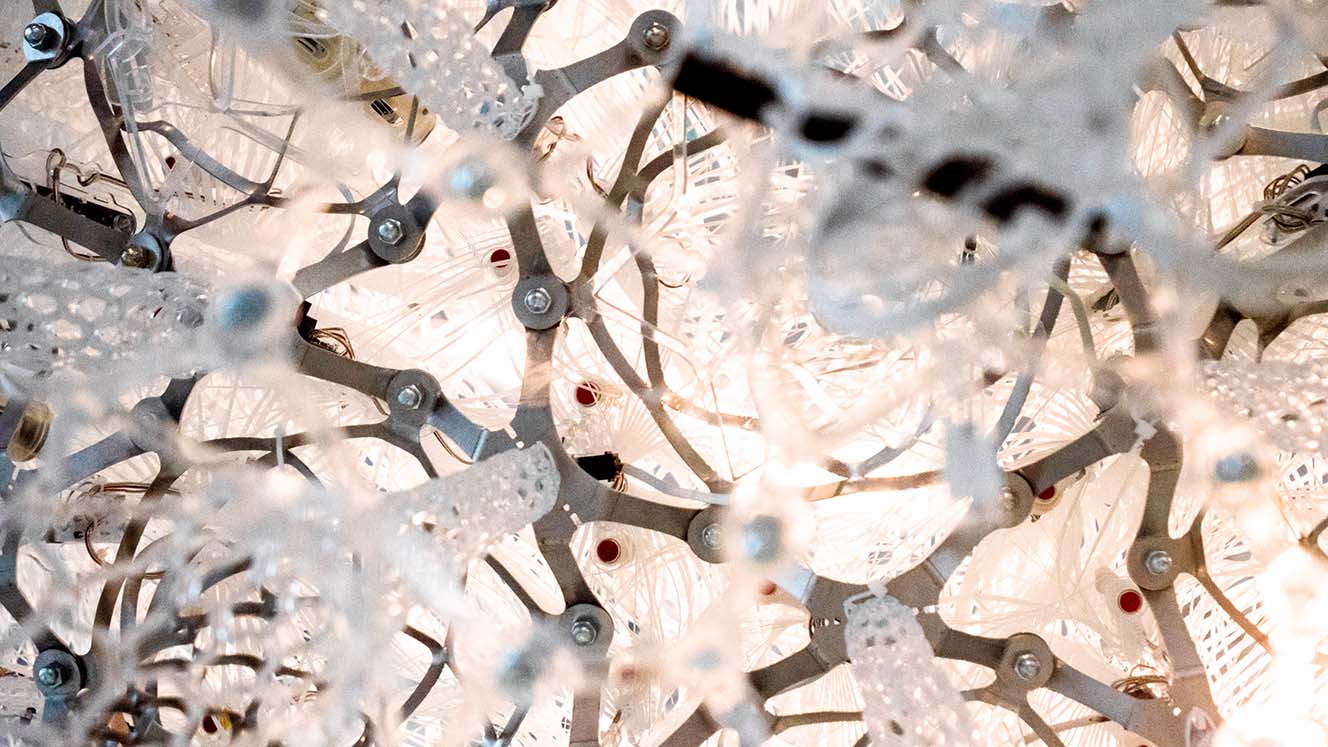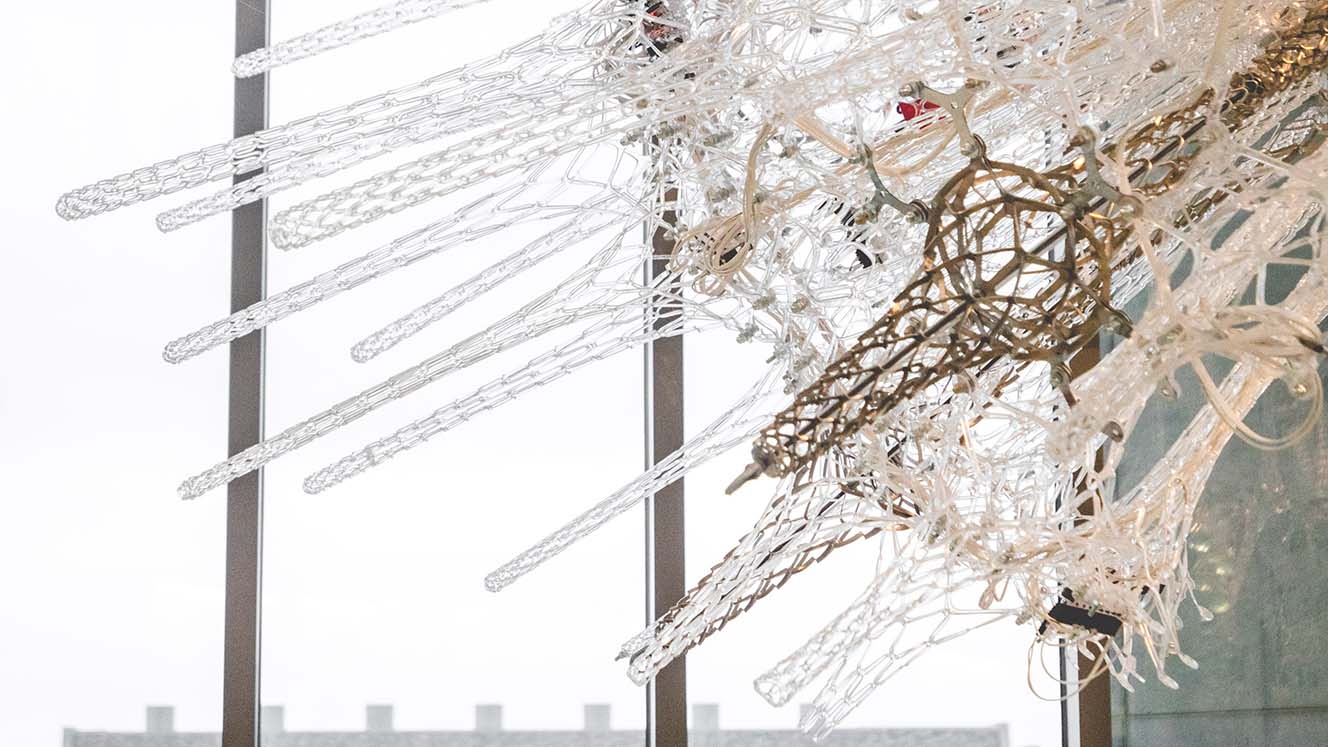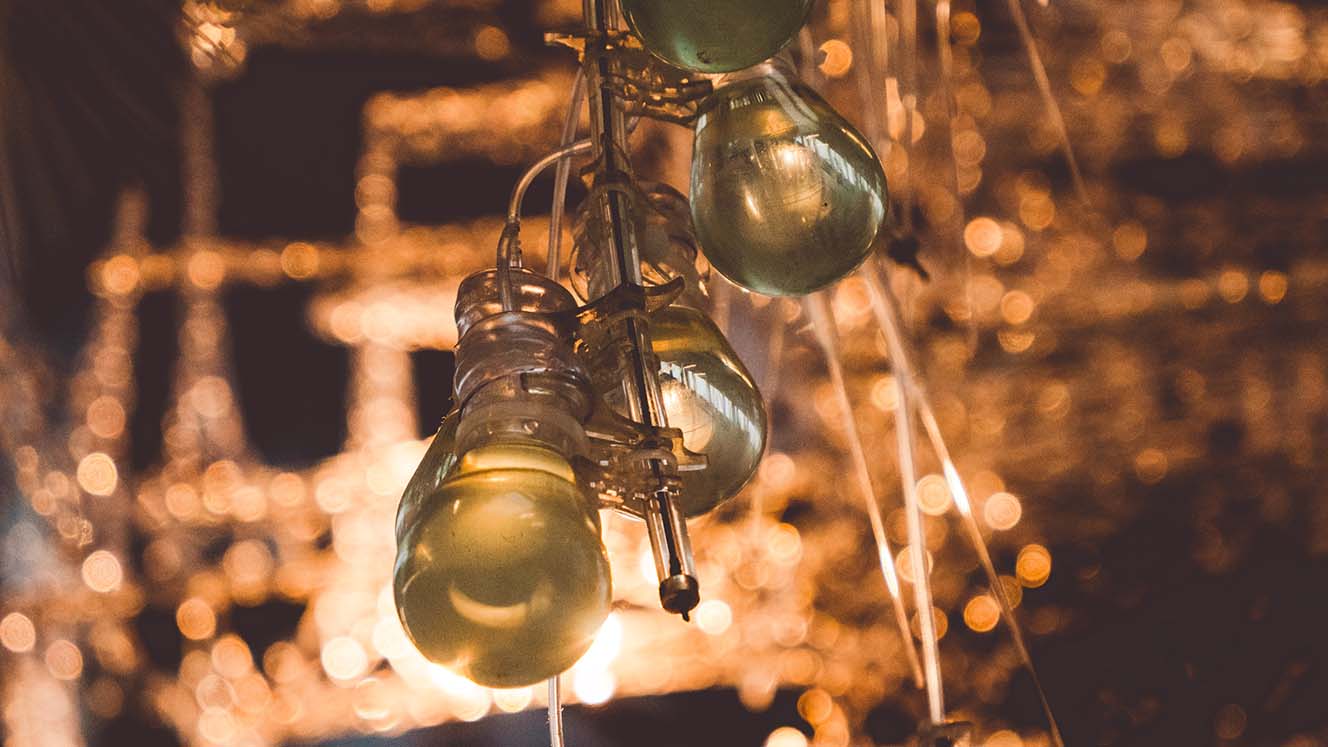
Cyberinfrastructure Network Science (CNS) Research Showcase
Autopoietic Bloom Premiere Presentation & Live Demonstration
Composer's Note
Autopoietic Bloom is a mood-based gestural improvisation engine for multichannel sentient architecture systems.
The work comprises a suite of improvisational schemata (written in JSON format) and custom software that analyzes these schemata and generates music in real-time. It was produced for Amatria, a "sentient sculpture," designed and created by Ontario-based Living Architecture Systems Group—led by architect Philip Beesley—and housed in Luddy Hall at Indiana University's Luddy School of Informatics Computing, and Engineering.
The sculpture features a 10-channel sound system, infrared and sound sensors, as well as LED light fixtures and vibrating leaf-like acrylic fronds. More information about Amatria, including photographs and video of the sculpture, can be found here: https://cns.iu.edu/amatria.html
Autopoietic Bloom allows the sculpture to improvise upon predetermined parametric improvisational that specify general musical information—such as gestural content, algorithmic musical transformations, and timbral ideas—analogous to what a human would read and interpret in, for example, a score by Lutosławski.
Moreover, Autopoietic Bloom is able to access and respond to real-world local weather data, which influences the sculpture's "mood" and thus how it improvises. The scheme used to improvise the music in the video preview recording corresponds to scattered rainfall.
Written in Max, using the Bach and Cage libraries (with a soupçon of Javascript), the software is highly modular, extensible, and extremely versatile, capable of producing music both desperately chaotic and restrictively prescribed (though that would, of course, defeat the work's purpose).
The semi-modular Absynth 5, by Native Instruments, forms the timbral core of Autopoietic Bloom, allowing for virtually limitless coloristic possibilities. Although the music is created in four voices that dynamically map onto the sculpture's ten channels, a binaural ambisonic projection of the sculpture's speaker configuration is produced here with the aid of Spat5, a sophisticated spatialization package developed by IRCAM.
Headphones are recommended.
Finally, while Autopoietic Bloom is a site-specific work, its built-in ambisonic spatializer allows a binaural version to be enjoyed anywhere. Thus, to aid in experiencing Autopoietic Bloom away from the sculptural space itself, an ambisonic visualization system—dubbed Mood Oracle—was created. Mood Oracle displays a top-down view of the sculpture, the surrounding architecture, the location of the virtual listener within that space, the location of each of Amatria's ten speakers, the musical (MIDI) content each of Autopoietic Bloom's four voices is currently playing, and the corresponding (virtual) speaker out of which each voice is sounding.
Documentation on Autopoietic Bloom can be found below, including a useful Composer's Guide to building and working with improvisational schemata—as well as an outline of Autopoietic Bloom's various modules, its basic software architecture, and an installation guide.
Cheers.
Praise for Autopoietic Bloom
"What an absolutely exquisite and beautiful birthday greeting for Amatria. It's hard to put into words just what respect and pleasure and sheer beauty that offered."
—Philip Beesley, Architect & Director, Living Architecture Systems Group
